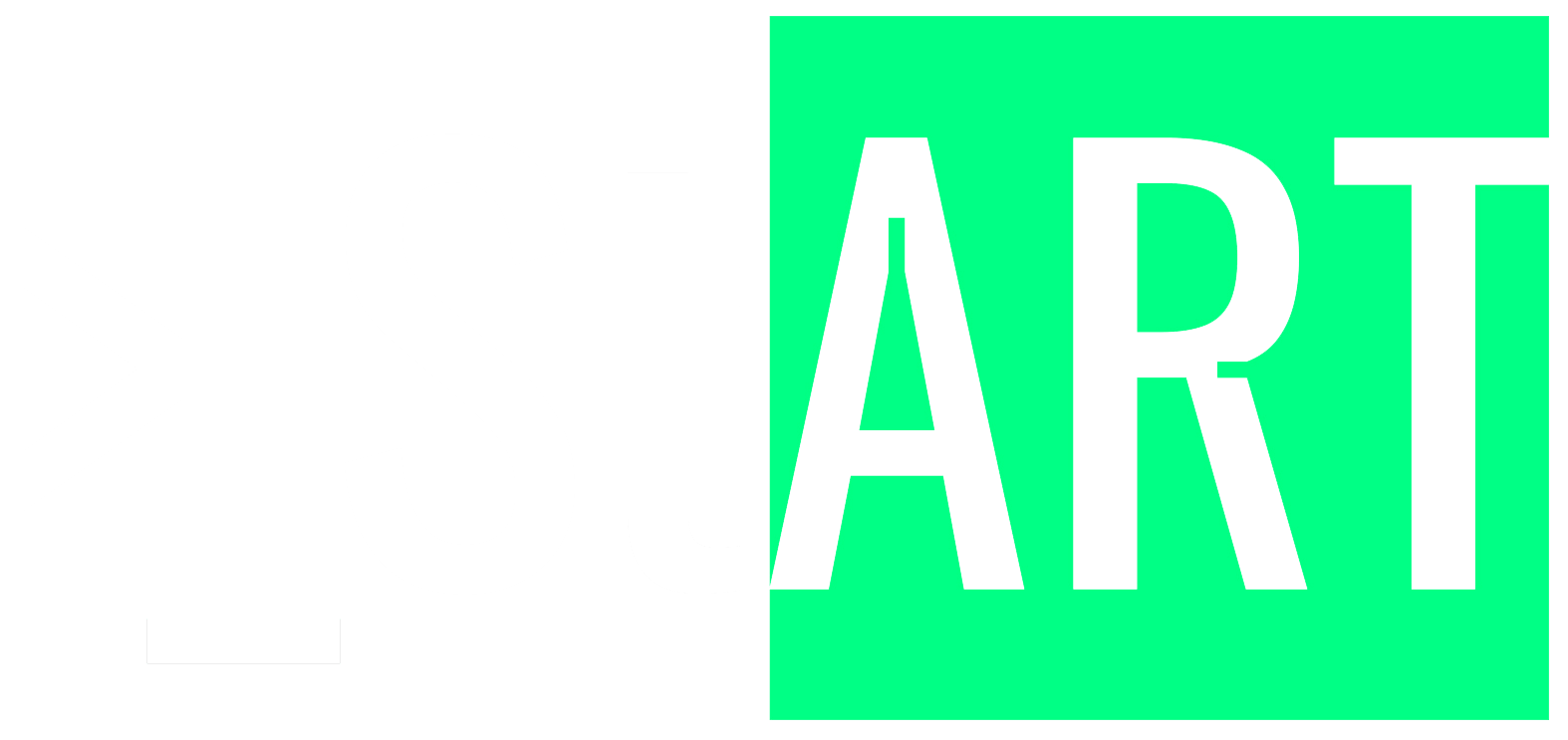- Exhibitors >
- StART Art Fair London 2023 >
- Exhibitions >
- Home >
- StART x PFSTA
StART x PFSTA
Exhibiting Project: StART x PFSTA
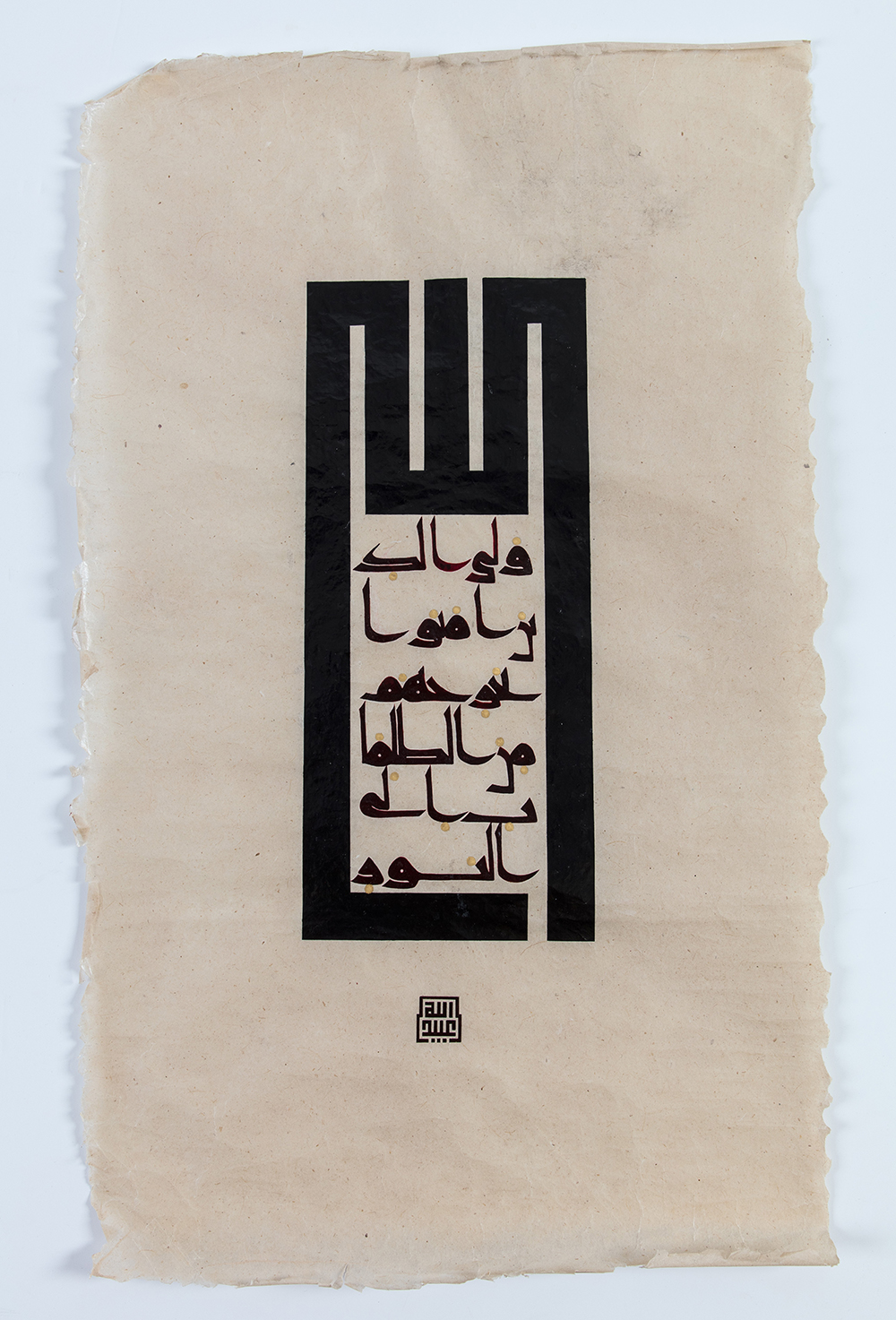
Ink and Shell Gold on Banana Leaf Paper
Ubaydullah Ahmad is a Calligrapher who specialises in the ancient Kufic, Maghribi and Ottoman scripts. He travelled to Cairo in 2009 and spent eight years there studying the Arabic Language and Calligraphy from some of the great masters in a traditional system passed down from master to apprentice for centuries.
He received his authoritative calligraphy licenses (Ijazaat) in the Kufic, Maghribi and Ottoman scripts. After moving back to London, he received a scholarship to the Prince’s Foundation School of Traditional Arts and graduated in 2020 with an MA in Visual Islamic and Traditional Arts.
He spent a couple of years during Covid in Istanbul, Turkey researching manuscripts and studying the Six Pens with Master Scribe Ahmed Fares.
His works have been commissioned by public and private clients most notably being commissioned by His Majesty King Charles III for a calligraphy panel.
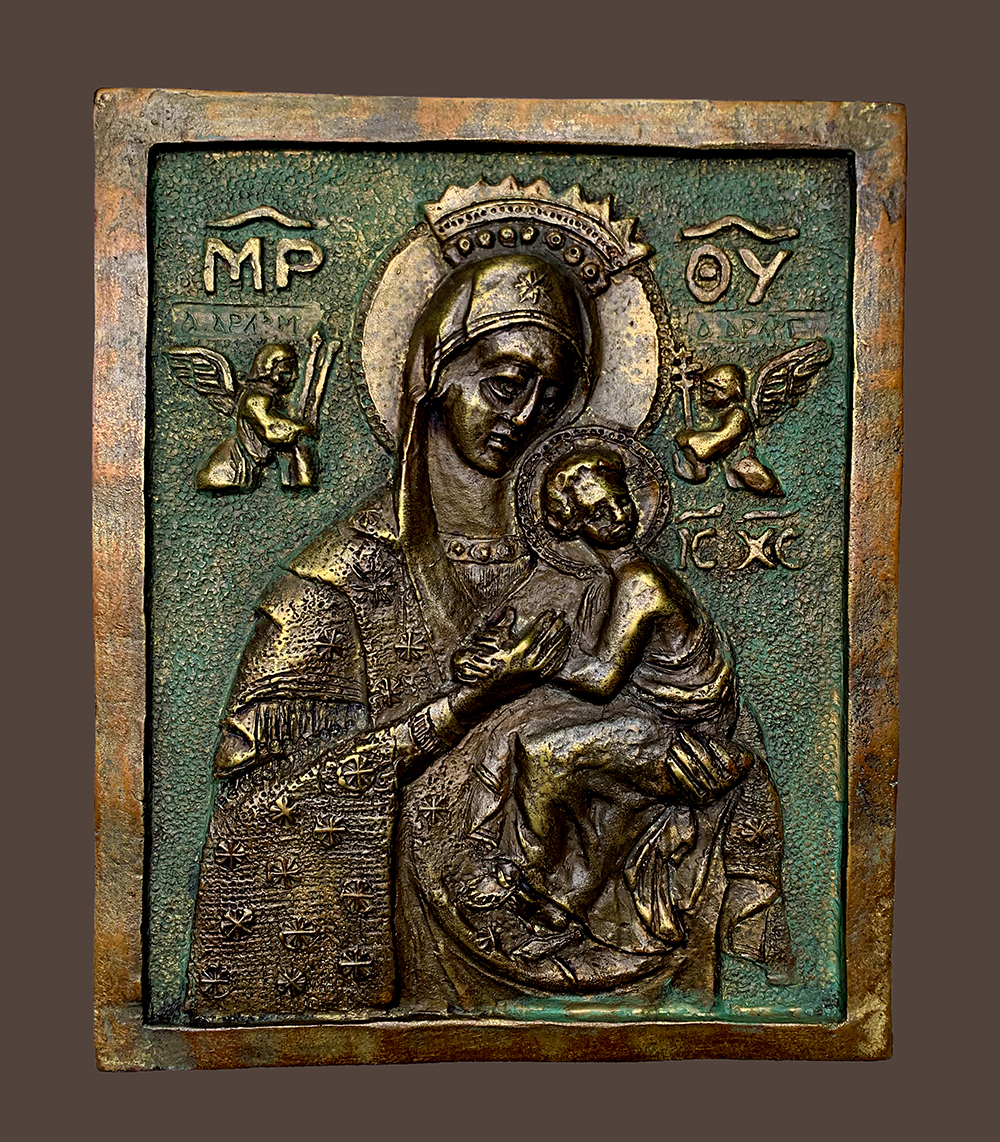
Cast Bronze
Aleksandras Aleksejevas is a skilled artist known for his captivating figurative sculptures and exquisite work in the field of iconography. His artistic journey began at Kaunas A. Martinaitis Art School in Lithuania (1991 - 1995), followed by transformative studies in London, including a Figurative Sculpture Course at RACC (2010-2015) and Life Drawing at the Royal Drawing School (2011-2012). In 2018, he proudly graduated with a PhD from The Prince’s Foundation School of Traditional Arts, London.
Using bronze as his medium, he breathes life into his creations, infusing spiritual depth through his iconographic pieces. Alongside his art, Aleksandras shares his expertise as an art tutor, inspiring others to explore their creative talents.
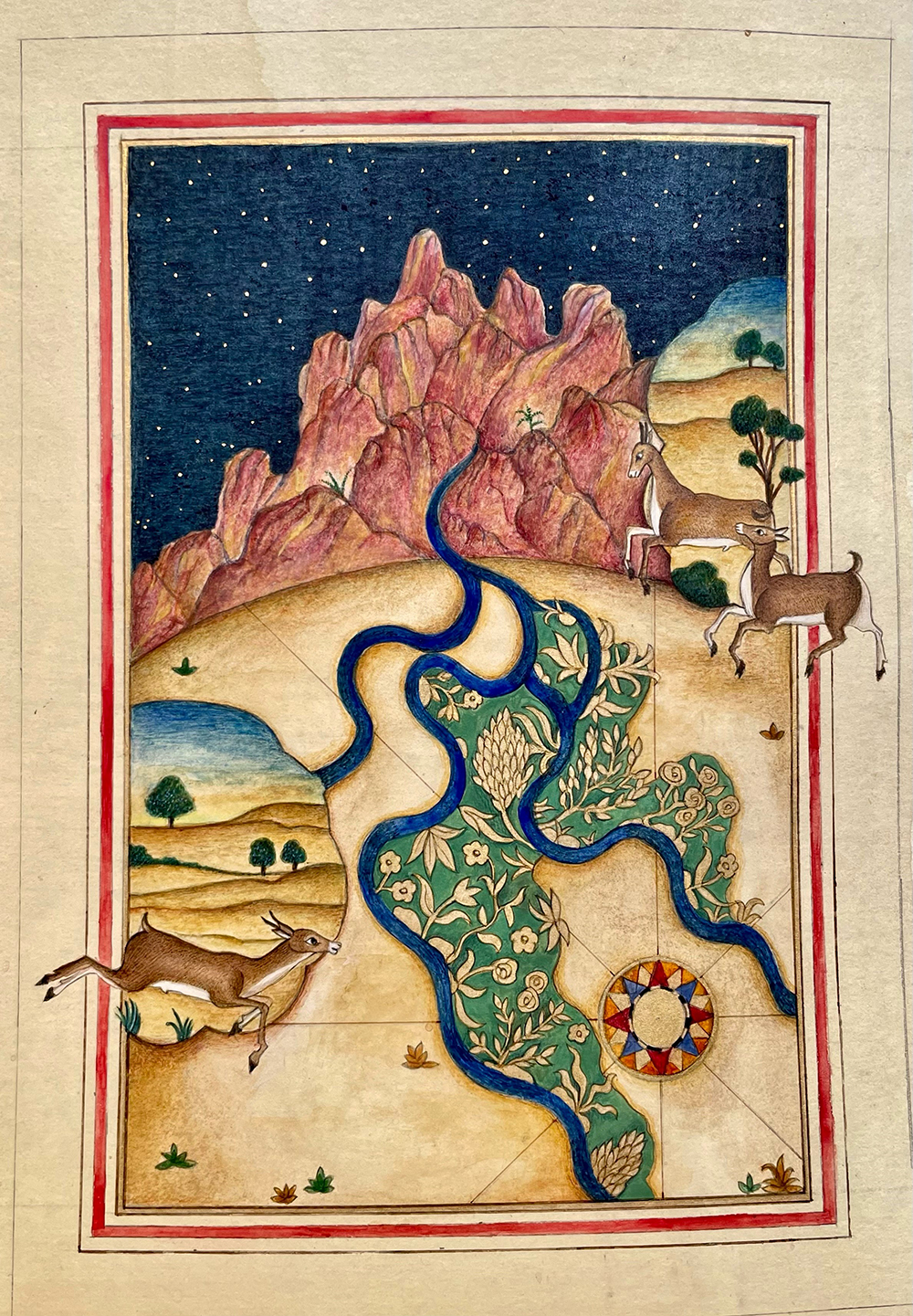
Watercolour, Hand-made pigments on Wasli Paper
Ayesha is a self-taught artist who completed her MA in Traditional Arts from the Prince’s Foundation School of Traditional Arts (2021). Her Degree Show sold out, with the Earl of Snowdon purchasing one of her main pieces.
Her work explores the concept of journeys using visual inspiration from medieval Islamic maps. Her paintings use vivid imagery contrasted with organic forms to illustrate the poignant journeys that shape our life experiences. She uses Indo-Persian miniature techniques to paint scenes that are part-map, part-landscape and steeped in symbolism.
Staying true to traditional practice, she makes her own water-colours using natural materials.
Ayesha’s work is currently on display at Ithra Museum in Saudi Arabia as part of their Hijrah exhibition, set to travel globally from this year. In March (2023) Ayesha participated in a group show at Asia House London called Humanism: Flowering of the being. Ayesha is based in London and currently working on private commissions.
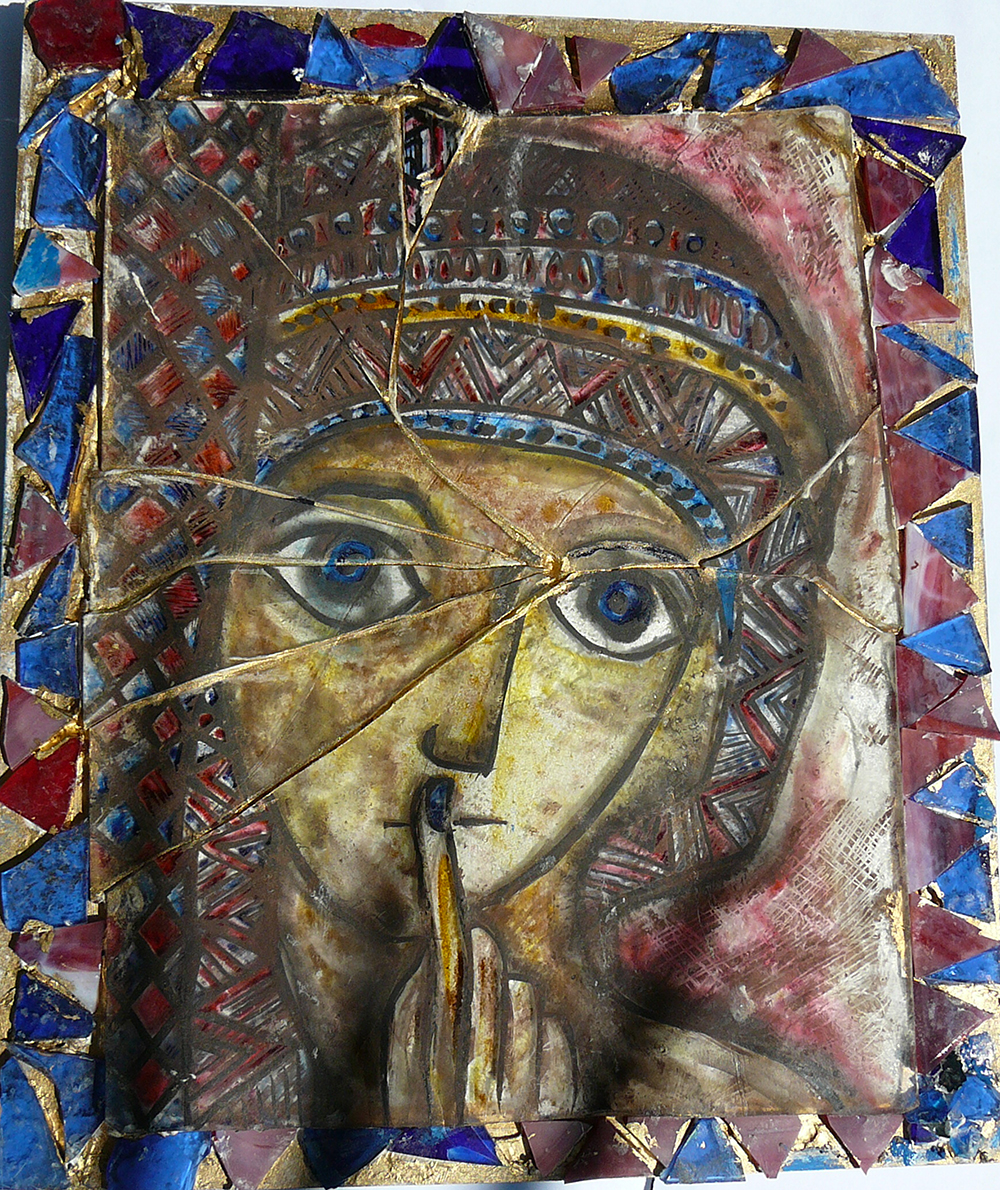
Stained glass fractured mosaic
Genista graduated from the Prince’s School of Traditional Arts (2015), specialising in Stained Glass, achieving a distinction MA. She currently works as a stained glass artist, accepting bespoke commissions while also teaching at PFSTA and running workshops funded by the Pargiter’s Trust, community foundation.
Genista recently completed a church conservation and restoration of a stained glass studio in Norfolk.
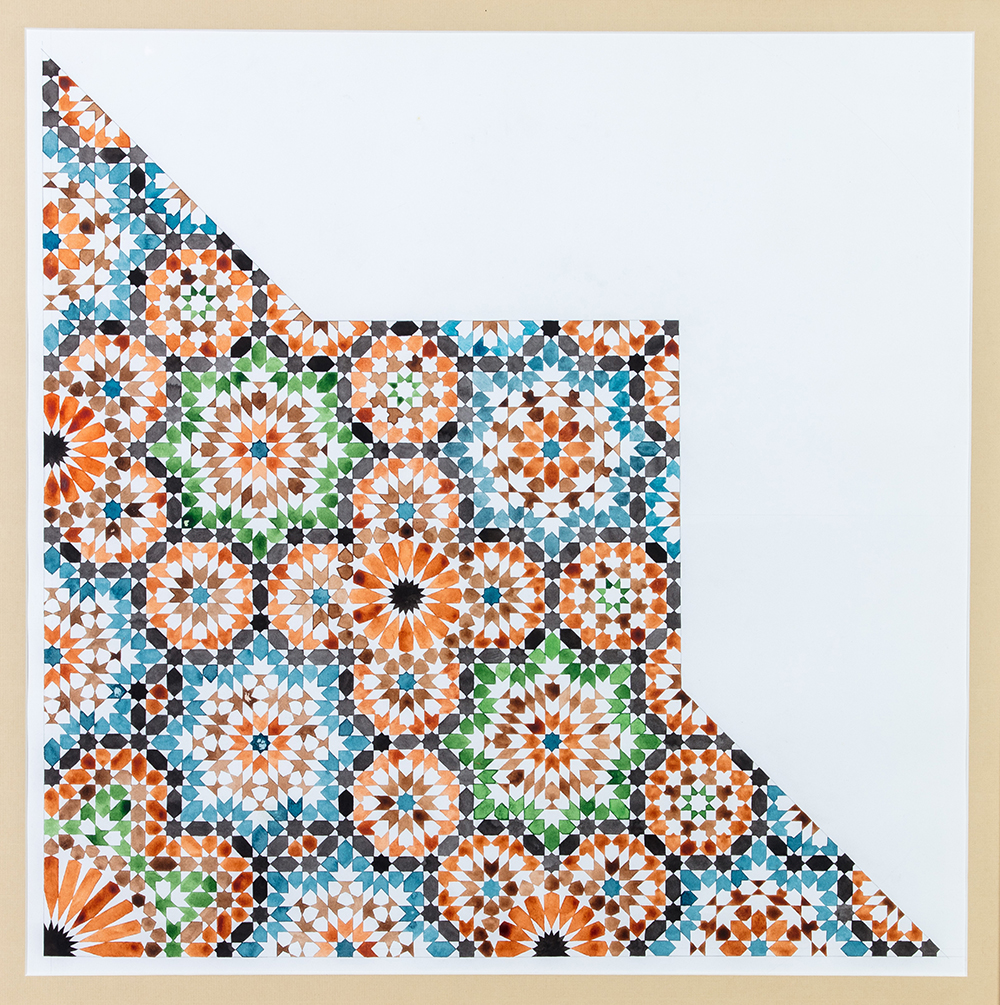
Gouche and natural pigments on hot pressed fabriano
Mohammad Abdul Aziz (b.1991, London) is an accomplished scholar specialising in Islamic sciences, theology, and jurisprudence. His journey in Islamic studies began in Bangladesh, where he dedicated himself to memorising the Holy Qur’an and achieved the esteemed title of Hafiz at the age of 13.
Aziz’s fascination with Islamic art emerged during his time in Bangladesh, where he was introduced to the scripts of Nasta’liq and Naskh. This initial spark led him to pursue traditional Islamic arts, including geometry and Islimi.
After graduating from the Institute of Islamic Education in Dewsbury, where he studied the seven dialects of the Holy Qur’an and Islamic sciences, Aziz continued his education at the Prince’s Foundation School of Traditional Arts, London. There, he focused on Islamic Geometry and the spiritual aspect of the art, earning a Master’s degree in Visual Islamic and Traditional Arts (2020).
Currently, Aziz shares his expertise with Islamic faith schools in London, teaching children the significance and diverse techniques of traditional arts.

Pigment, egg tempera, calligraphy in Japanese soot ink
Working predominantly with wood and clay, Halima has used these mediums to interpret the language of patterns and calligraphy found in West African Islamic art and craft. Halima Bashir was born and raised in Nigeria and takes influences from the Arabic calligraphy script predominant in West Africa called Sudani and patterns from craftwork in northern Nigeria.
Having studied architecture in Nigeria and North Cyprus, she has taken her interest in traditional architecture to her art and craft work. Halima is currently working towards her ijaza (certificate) in Arabic calligraphy with a master calligrapher.

23ct, 16.7ct, 12ct and 21ct Gold, watercolour and gouache on prepared Chinese scroll
Mahrukh Bashir is a classically trained artist, her interest is in arts of the book. With a passion for exploring the intersection of nature, spirituality and tradition. She draws inspiration from her diverse background and travel.
Mahrukh uses age-old methods and materials. Her artwork reflects her appreciation for cultural diversity and the underlying connective order of nature. Her artwork has been acquired for various private and royal collections and has been part of national and international exhibitions. Her work serves as a bridge between past and present, reminding us to celebrate our diversity and understand our universal connection.
Mahrukh was awarded a distinction for her Masters degree from the PFSTA (2016). She is currently completing her ‘icazaname’ in Islamic manuscript illumination, which is a traditional certification that would recognise her authority and expertise in the field.

Ink and Watercolour on Hanji Paper
Prasad (b. London, 1994) spent 6 years of his childhood studying in India, at the foothills of the Himalayas. This early immersion in the mountains fostered a love for the majestic beauty nature has to offer. As a practitioner of meditation, he emphasises the importance of his inner well-being and strives to constantly achieve a state of peace, knowing that this will permeate into his artwork.
Studying a Masters in Traditional Arts helped Prasad discover Chinese Landscape Painting which has been a great revelation for him. Through studying Chinese thought in painting he has understood the subtle significance of not just imitating nature but expressing his inner feelings about it.
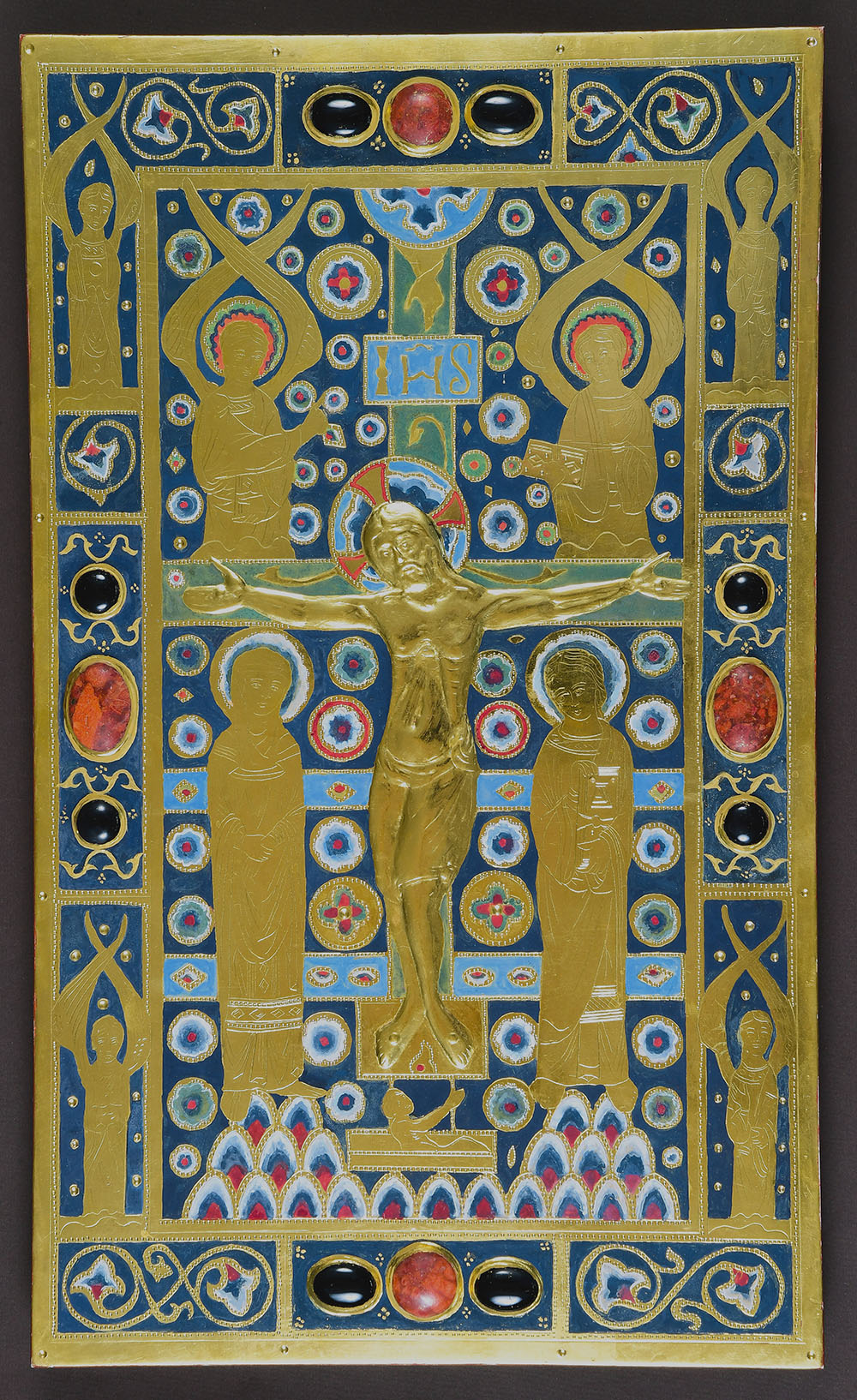
Egg tempera, gesso relief, gold leaf, natural pigments, semi-precious stones
Irina Bradley specialises in icon painting and contemporary art. His Majesty King Charles III acquired Irina’s icons for his Highgrove Chapel. Irina has exhibited extensively, her works have been exhibited at Buckingham Palace, Christchurch Cathedral in Oxford, Cumberland Lodge in Royal Windsor, Dumfries House, to name a few. Icons of Our Lady of Tenderness, Archangel Michael and Archangel Gabriel were exhibited at Buckingham Palace at a Prince and Patron Exhibition (2018).
Her icons were featured on the BBC’s Songs of Praise (2023) and on American TV series Artful (October 2023). Additionally, Irina is a visiting tutor for icon painting at the Prince’s Foundation School of Traditional Arts, where she graduated with a doctorate (2015).
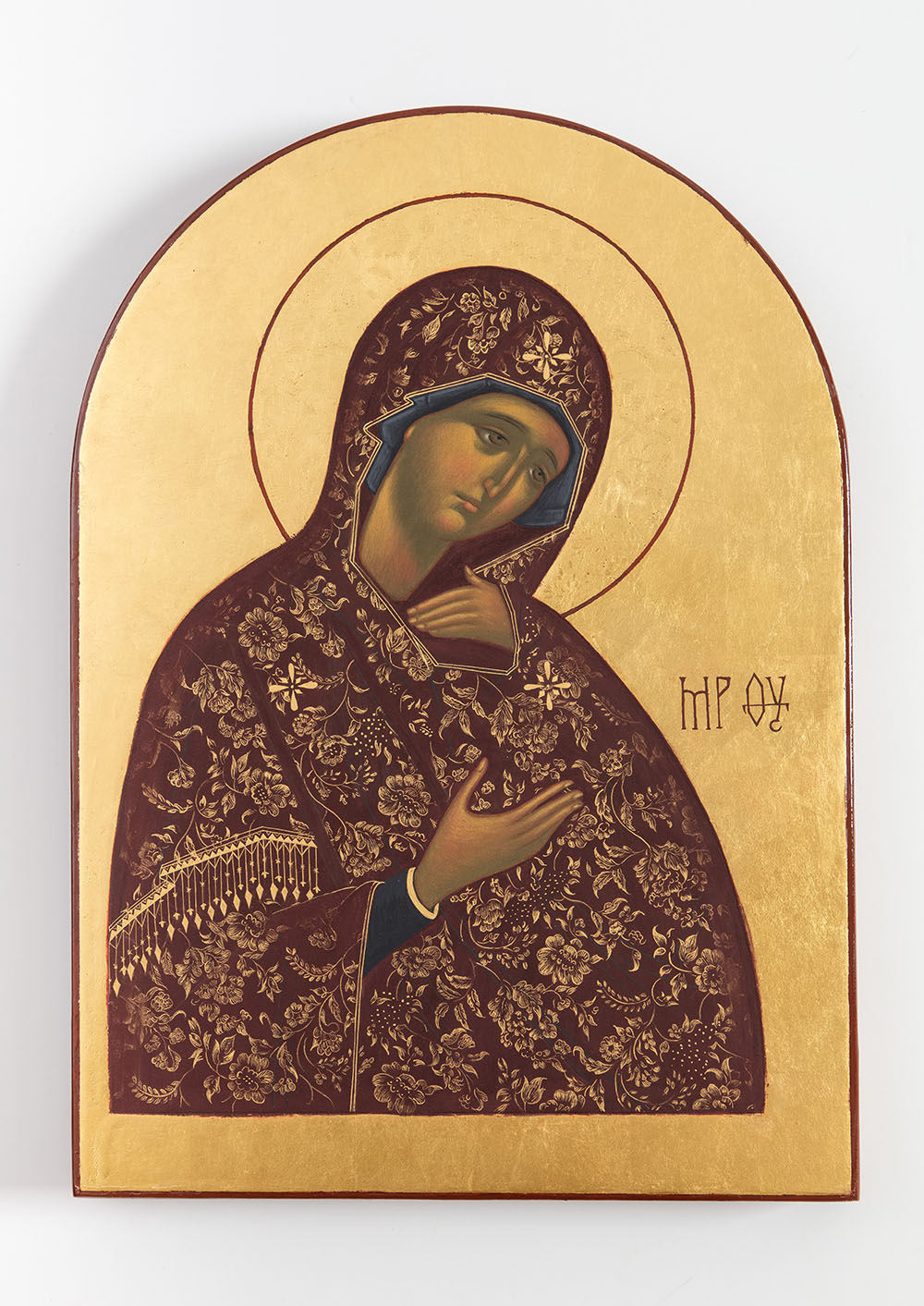
Egg tempera with natural pigments on gesso board, 23.5k gold leaf
Louisa Brouk is originally from Paris, France. She has always been interested in the traditional perspective, particularly its symbolic purpose and craftsmanship.
After discovering the beauty of traditional art in multiple cultures, she became inspired and delved into the intricacies and symbolism of Iconography.
Louisa is a graduate of the Prince’s Foundation School of Traditional Arts.
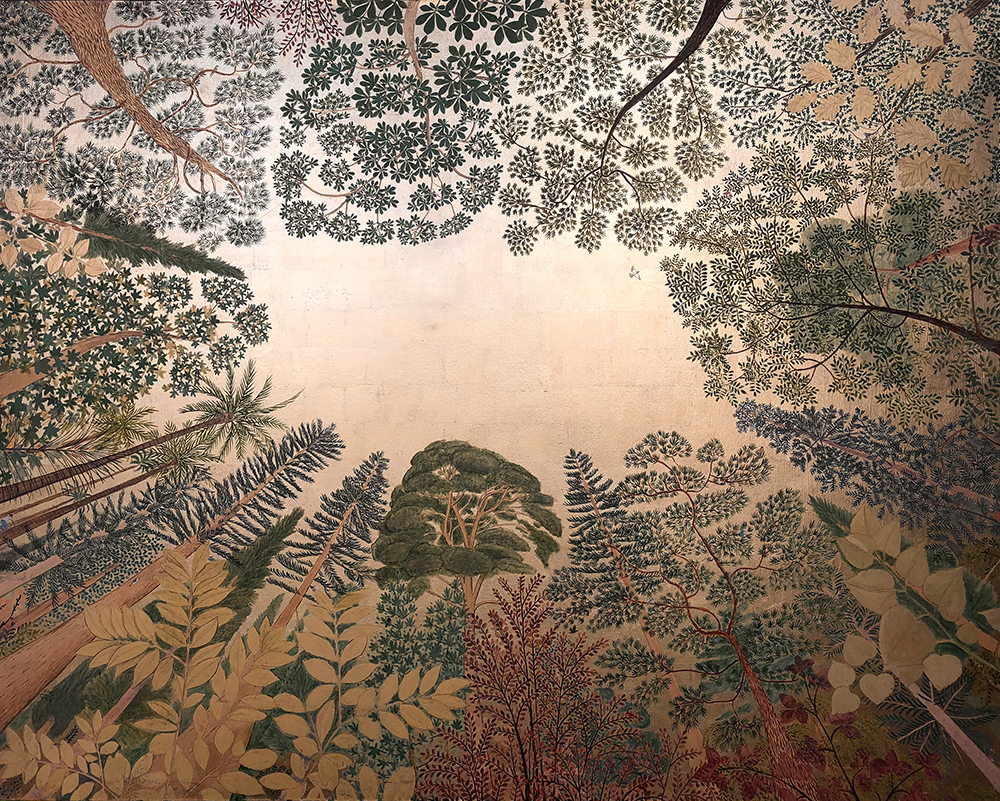
Oil and 23 carat gold leaf on canvas
Jethro Buck is a painter, graduate of the Prince’s School of Traditional Arts and former Ciclitira Prize winner. In his practice Jethro applies traditional techniques to explore and celebrate the natural world, his work can be found in private collections around the world.
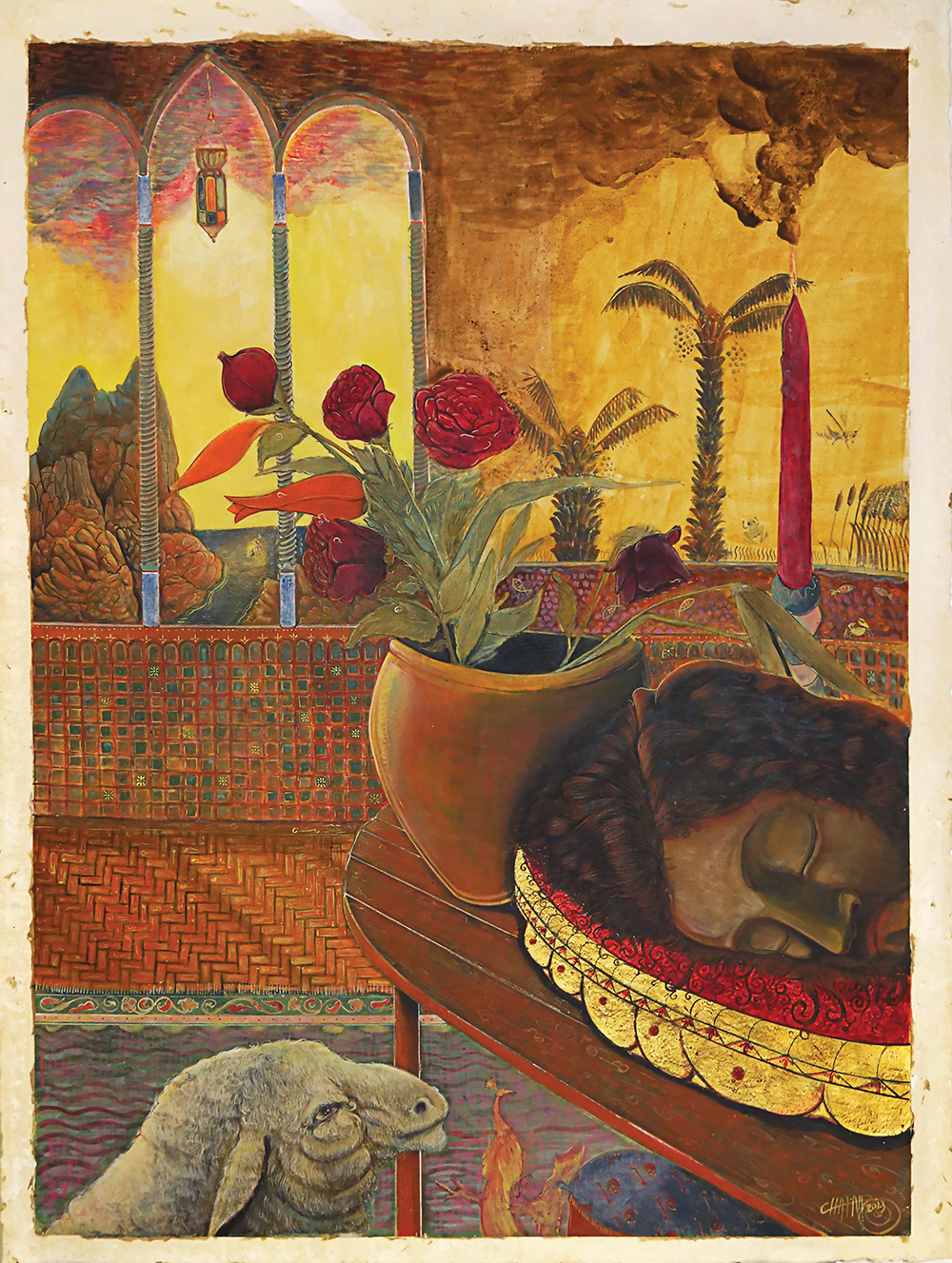
Egg Tempera and Gilding on Gesso, on Paper
Born in Brazil, 1994. As Catholic Christians, the artist’s parents took him to mass regularly during his childhood where the preaching he deemed tiresome triggered anxiety within him and let to his pestering his parents for the end.
Eventually his mother gave him paper and pencil and so he began drawing the imagery of the cathedral’s walls. This profoundly influenced his practice and development as a visual artist that sources deeply from the tradition of painting and implement through contemporary creative manifestation.

Ink on Silk
Cong Yunfeng (b. 1990, China) is a UK-based multidisciplinary artist known for his innovative approach to painting, drawing, digital arts, and mixed-media techniques. Inspired by diverse art forms spanning China, Europe, the Middle East, and India, his paintings employ pictorial systems infused with codes, triggering perceptual shifts and immersive “scene changes.”
The pursuit of a code in Cong’s artwork reflects his commitment to universal principles. His works are encyclopaedic representations in which everything needs to be ordered into its place. Seamlessly integrating traditional methods, stylised cultural forms, and modern technology, Cong dismantles boundaries between artistic traditions and blurs the line between the tangible and the digital, the traditional and the contemporary, and the spiritual and the technological.
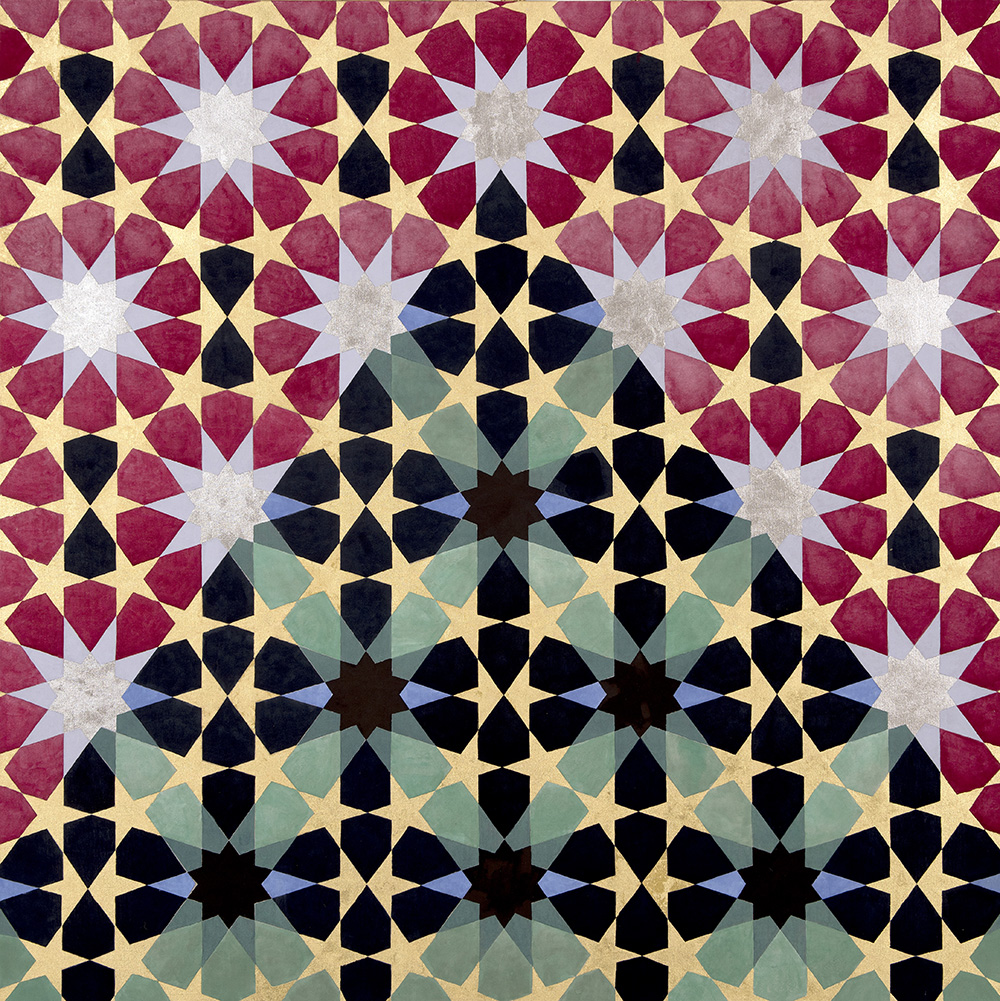
Italian gold leaf, palladium leaf and natural pigments on linen
Elisabeth Deane is a painter who uses ancient traditional techniques to make work with an entirely contemporary aesthetic. Elisabeth’s colours and detailed brushwork are inspired by Islamic geometry and the miniature painting traditions of India and Iran.
Elisabeth learnt much of her craft at the Prince’s Foundation School of Traditional Arts where she completed a MA (2017). Elisabeth is represented by Grosvenor Gallery, London and is looking forward to a solo show there next year (2024).
“My aim is to yield delight and joy through the geometric arrangement of colour. I am interested in intricate patterns and colour relationships. Natural pigments are beautiful. I’m aiming for that right combination of colours which when brought together create vibrations, ones that sing.” The abstract geometric nature of much of Elisabeth’s work represents both the simple and the universal, the micro and the macro and the interplay between these dichotomies.
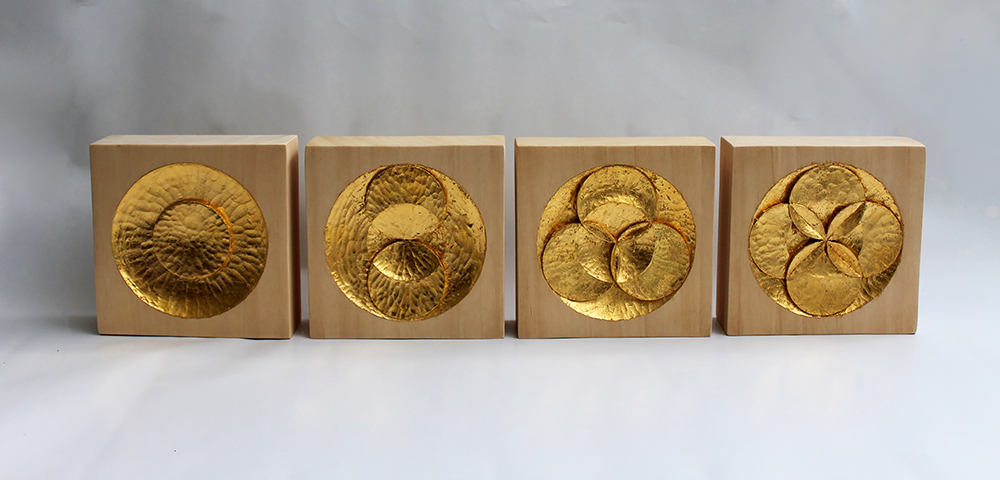
Ayous wood with 23,75 carat gold leaf
Den Boer’s work is rooted in traditional arts - painting, geometry and natural materials. She has said “painting is craft based, before anything else”.
Her primary mediums are egg tempera, watercolour and oil paint, but she frequently makes carved works. Current investigations include techniques of layering egg tempera and varied ways of incorporating tree bark, wood grain, locally found chalk and pigments into paintings. Den Boer has carried out a deep study of garden of paradise traditions.
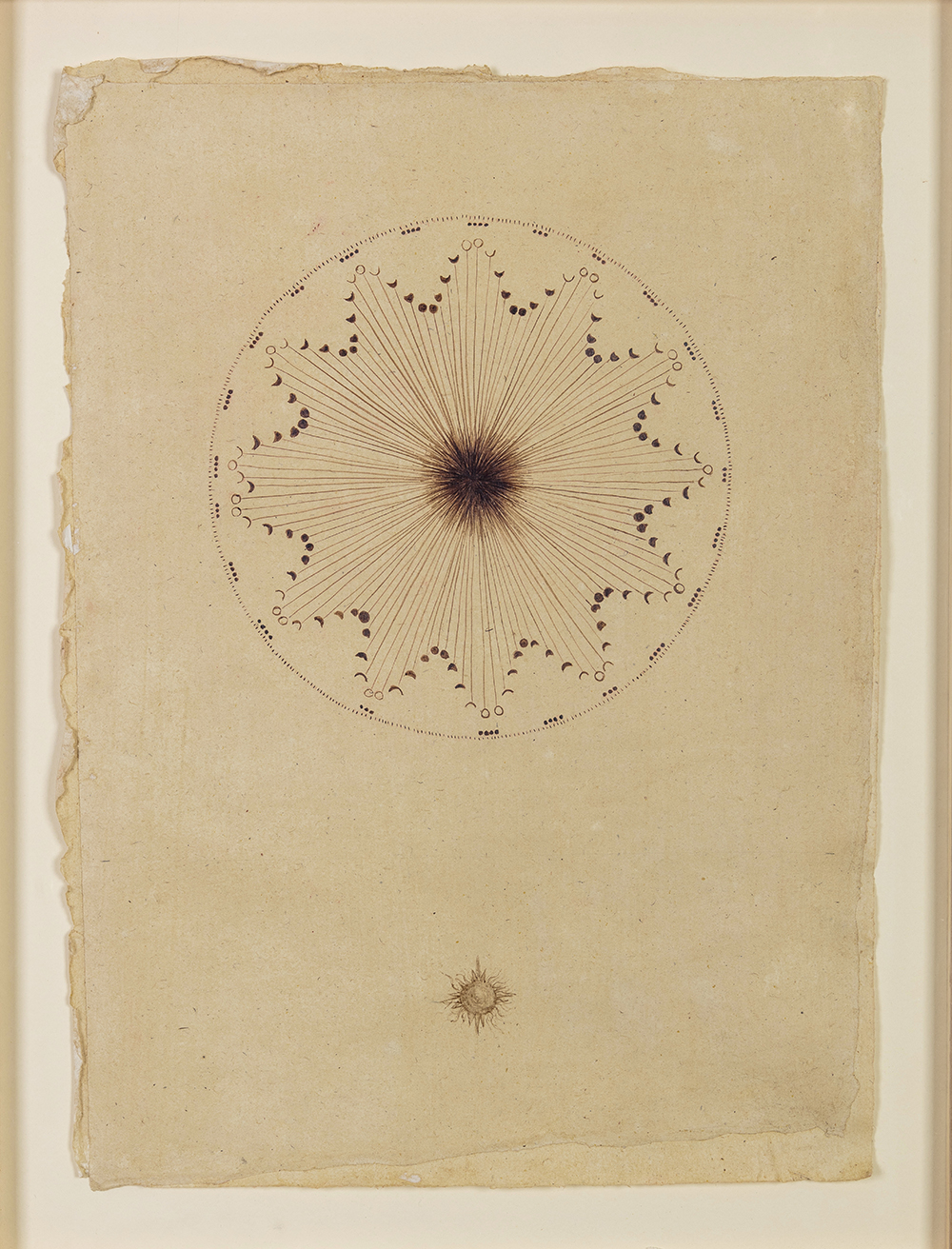
Walnut Ink on Hemp Paper
Nicole is a multidisciplinary artist living in Hackney, London. She completed her masters with distinction at the Prince’s Foundation School of Traditional Arts (2022) and received the Kairos Award. Her work varies from intuitive geometric paintings, clay work and textile art. Nicole explores the deeper layers of her mystical journey through her art, allowing a natural flow in her practice, traditional process and materials she uses.
Her work often transcends the separateness of me and mine, illuminating alternative realities from a deep sense of the inner self. Sensed by intuition, ritual and alchemical transformation. Nicole makes her own paints from foraged earth pigments and plants, connecting her deeply to the land and what it holds.
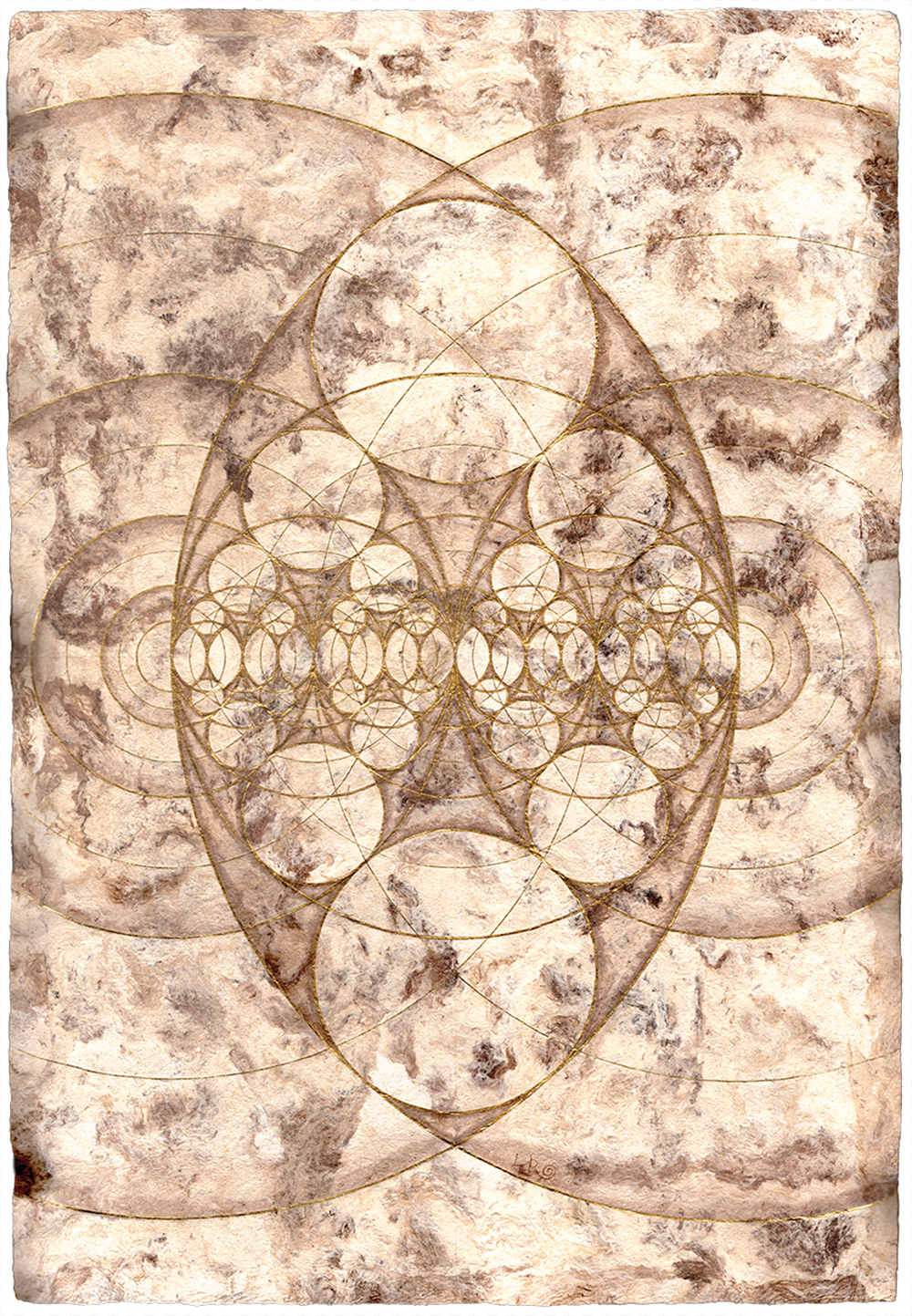
Walnut ink and genuine gold paint on paper made of bark (hand-made in Mexico)
Lucie Rose Galvani is a French artist, (b.1989) based in Lyon, France. During her master’s at the Prince’s Foundation School of Traditional Arts, she discovered traditional geometry, natural pigment paints and gilding.
Since then, Lucie Rose has analysed and explored the geometry of gothic rose windows and other geometric patterns. Geometric roses have a meditative effect, both blooming from and converging to the centre. Fascinated by the delicate and complex roses from Gothic architecture, Lucie Rose uses compass and ruler to trace those harmonious geometric shapes. Then she chooses the strength of natural genuine pigments and the inimitable shine of gold leaf to express them.
Lucie Rose rejoices in the elongated time needed for those traditional practices. It creates a different relation to patterns and colour. Colour becomes matter and matter morphs into colour and light.
She has exhibited in London, Lyon and Strasbourg.
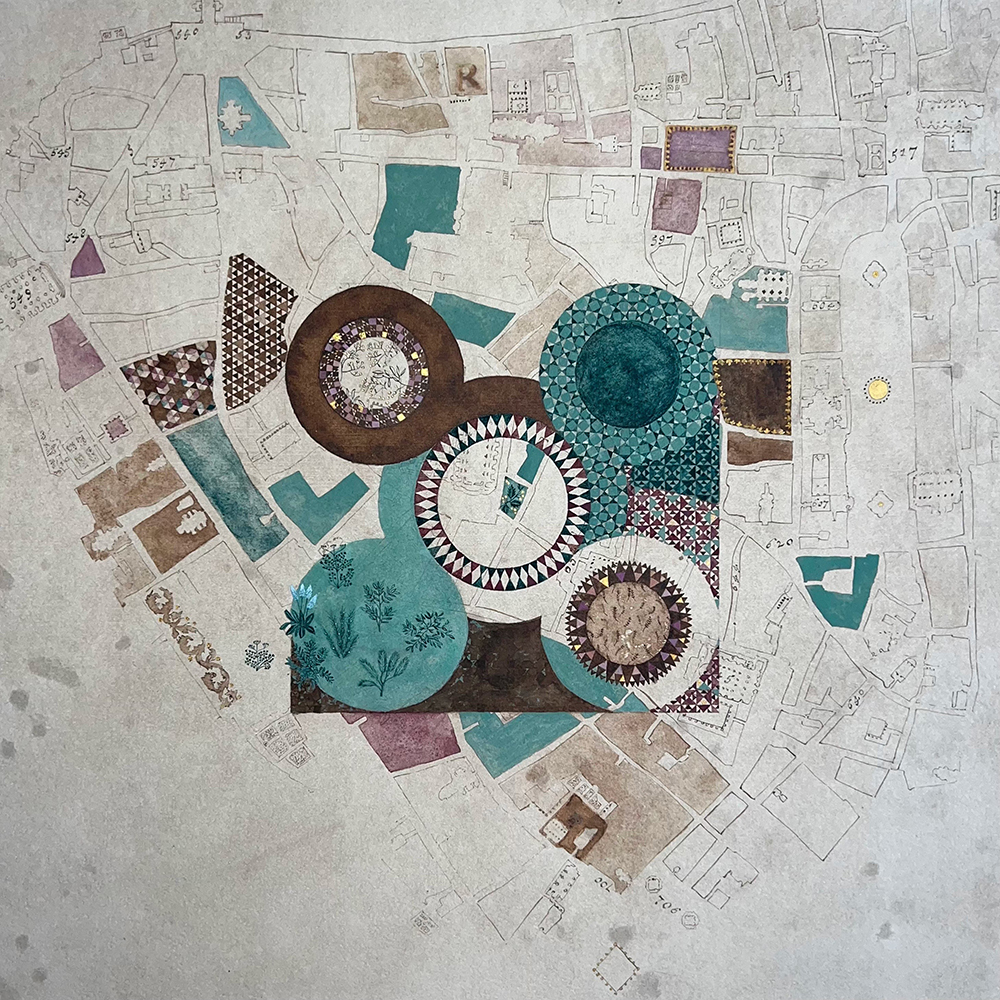
Natural pigments with Gum Arabic and with Egg Tempera, Walnut ink, Akanegimo ink, 24k Shell-Gold, Graphite on stained European paper
Magdalena (b.1976, Warsaw, Poland) moved to England at the age of 12.
Unable to initially speak the new language she adopted the visual as a means of relating experiences, completing a BA in Fine Art at the Slade School, UCL and MA in Traditional Arts at the PFSTA.
In through her practice she weaves together the traditional approach with the contemporary. Magdalena lives in Rome, where she teaches geometry of the Cosmatesque patterns to children.
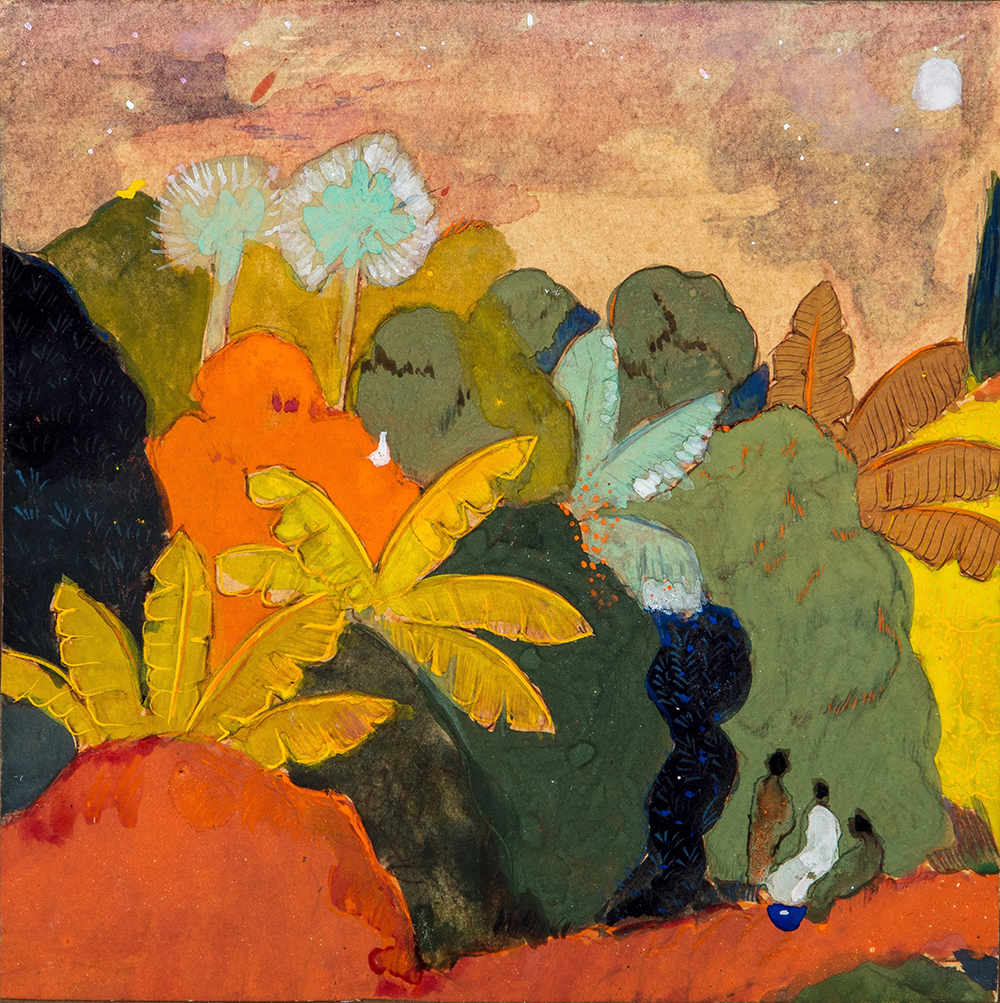
Handmade natural pigments watercolour on hot pressed 300gsm watercolour paper
Aurélie Gérardin is a French painter-engraver who lives and works in London, UK.
Using the techniques of figurative art and magic realism, she paints an inner pictorial world nourished by literature, music, observation of reality and its transformation by memory.
She has travelled on the European, African, American, Indian and Australian continents, all of which have had influence on her art practice. She trained in painting and printmaking in Paris, France (Taylor Foundation-Salon d’Automne 2020 printmaking award).
In 2018, she initiated herself into Indian miniature painting with the master Ajay Sharma in Jaipur, India. In 2020, she joined the MA at the Prince’s Foundation School of Traditional Arts, furthering her knowledge of pigments and traditional processes. Within a protean artistic practice (integrating painting, life-drawing, and etching) she constantly creates dialogues between different media.
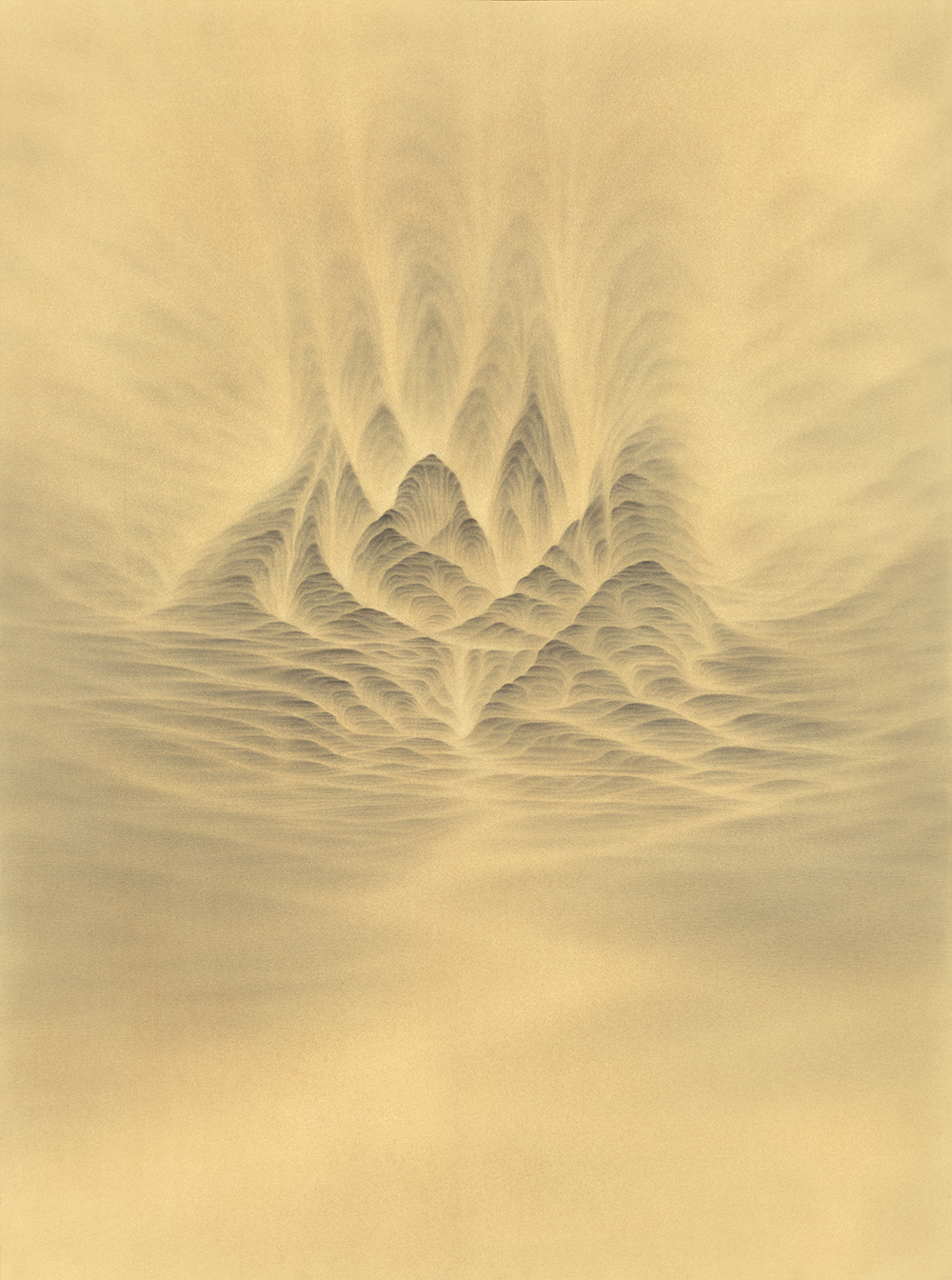
Pencil on Tea-Stained Paper
Luke Goddard is an artist based in the UK. Growing up in Hong Kong, England and later South Africa his development was shaped by the influences of different cultures. Somewhat alienated by his itinerant upbringing he found solace in art and discovered a way to channel his creativity and connect with others directly through artistic means.
A highly curious person, drawing and painting became a tool for exploring himself and giving shape to things unseen. Deeply inspired by the sublime beauty of nature he feels moved to express an inner experience of harmony, unity, and connection in which all conflict is resolved.
With this intention, subtle imaginal realms are revealed where the distinction between mind and matter seems to dissolve. Hesitant to offer description, he believes the value of his work is found when viewers use it as a vehicle to connect with their own inner experience and imagination.
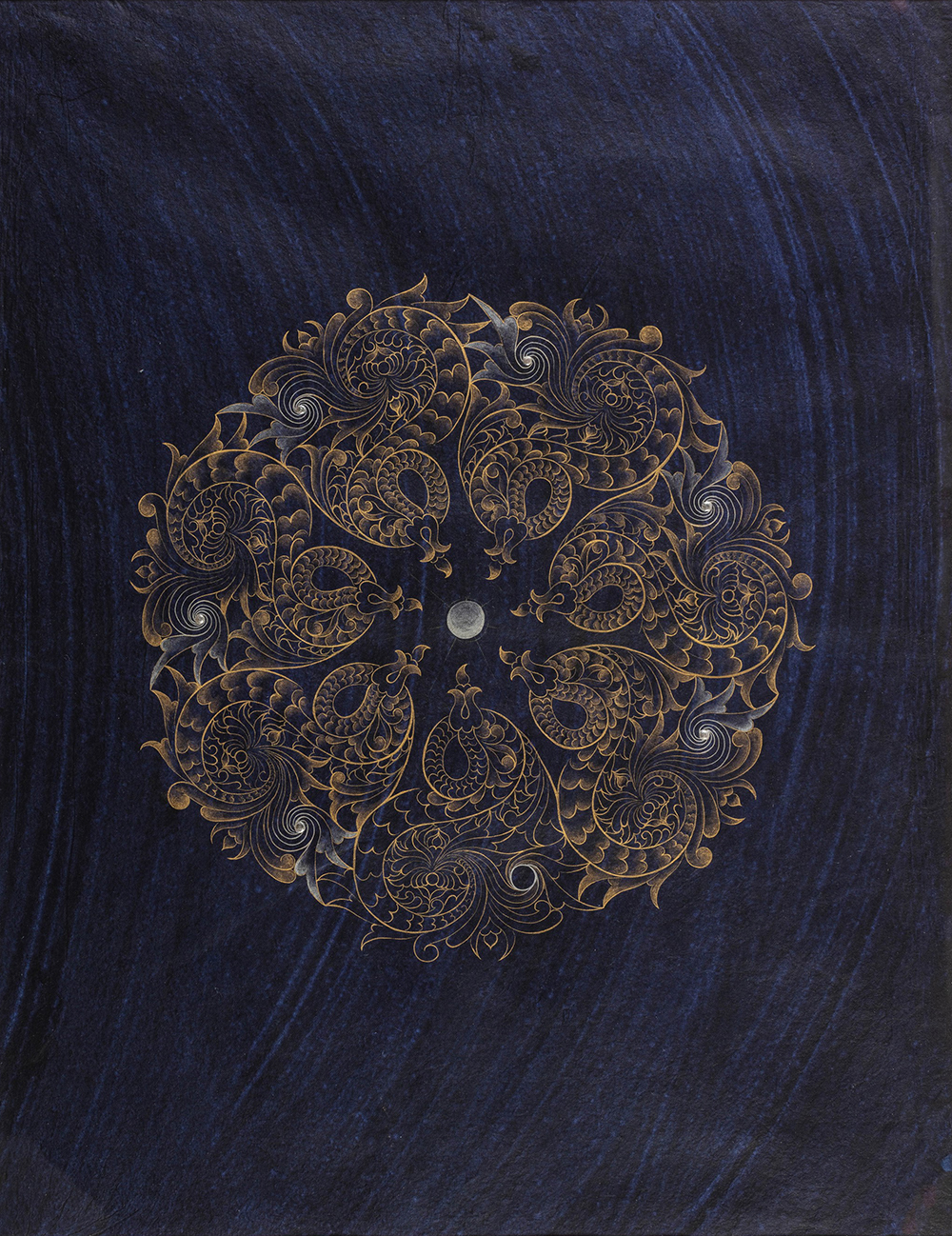
6k white gold leaf and 23.5k shell gold on indigo paper
Kat Grow, is a Filipina visual artist from Laguna, (Philippines) who has been exhibiting (group and solo shows) in galleries nationally. Kat arrived in London with a great zeal and affinity for art technology, historic pigment making has been her entry point into the traditional arts.
Since 2016, she has been researching pigment making and makes pigments in collaboration with indigenous communities in the Philippines. This ongoing love for traditional crafts led her to pursue her Masters in Traditional Arts in the Prince’s Foundation School of Traditional Arts.
Now she is in a love affair with a multitude of art forms namely: arabesques and biomorphs, sacred geometry, ceramics, Tezhip and Islamic illumination, and Turkish paper marbling. She is currently exploring the subtleties of art-making and personal spiritual growth with themes from Philippine myths and Mindanao Islamic manuscripts.
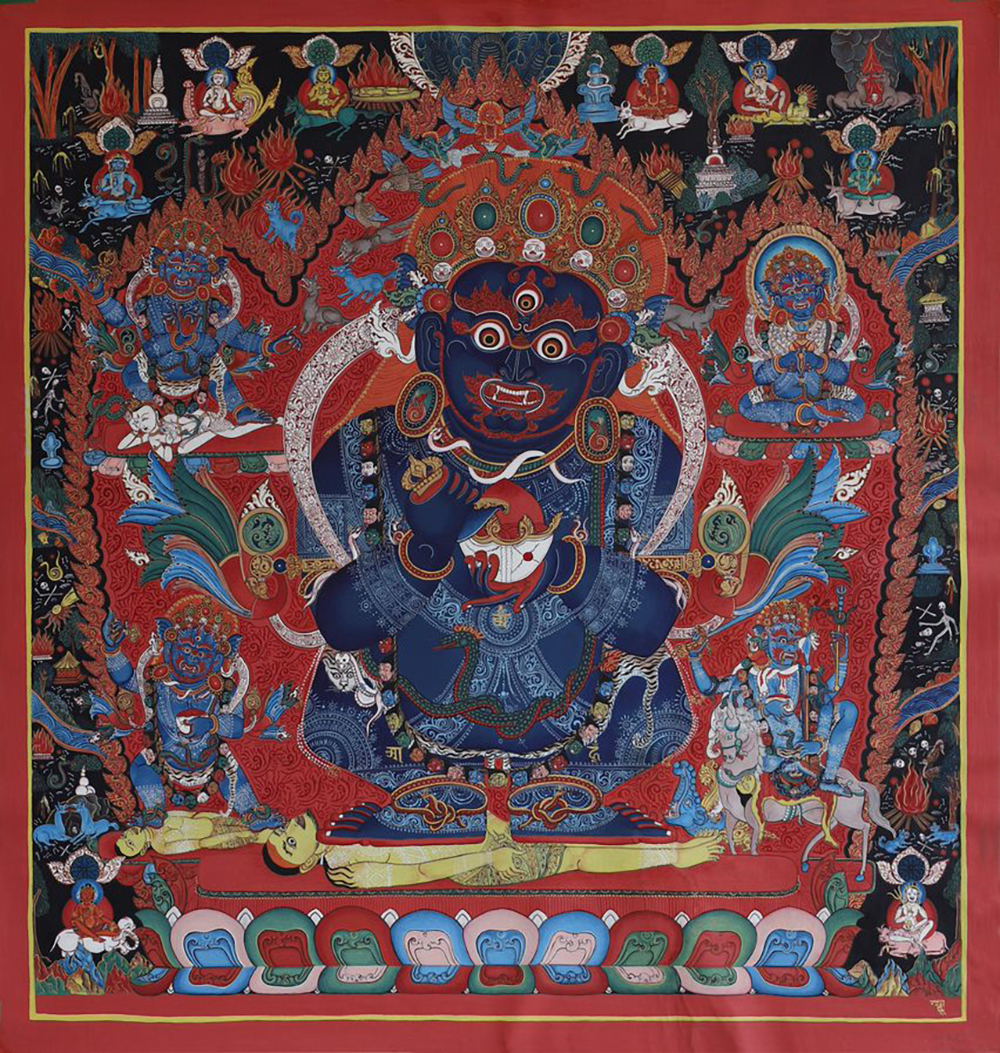
Handmade Nepali Canvas, Hand ground Mineral Pigments and 24K gold
Renuka Gurung (b.1963), is one of the few female Nepalese traditional paubha painters and a traditional art scholar. She won the PFSTA Ciclitira Prize (2013) for her degree show titled “Understanding, Preserving and transmitting the tradition of paubha painting in 21st century Nepal”. Interested in the deeper aspect of traditional devotional arts; it’s benefit to humankind in the 21st century and the role of women in the preservation and promotion of endangered material and knowledge of traditional arts.
She has been a visiting tutor at the PFSTA for more than a decade and travels the world, sharing wisdom and practice of paubha and exhibiting her works.
Her works are under the private collection of His Majesty King Charles III and many other prestigious collections internationally.
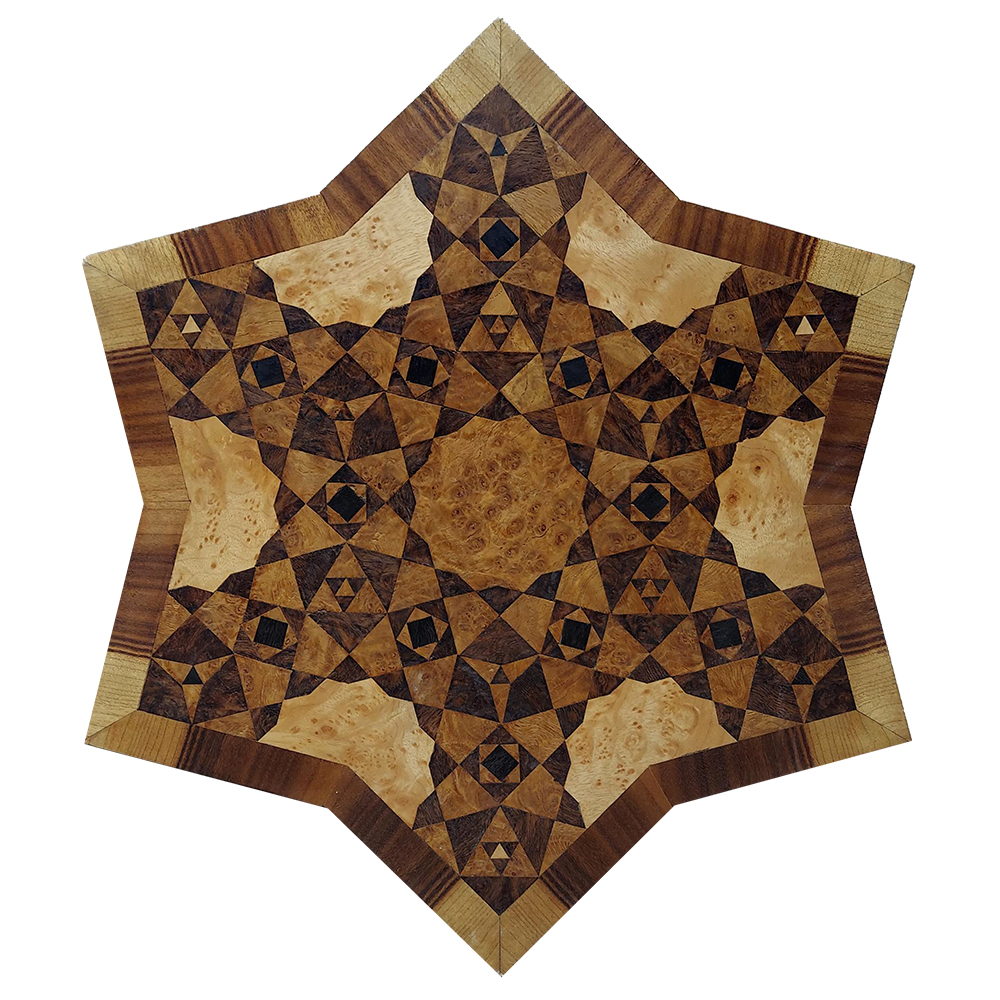
Walnut Burr & Fumed Aspen Veneer
David Heskin is an accomplished artist working in traditional mediums, including carving in stone and wood, and painting with oil and egg tempera. David’s art often defies genre compartmentalisation, as he has produced extensive bodies of work in a variety of styles and materials. Spanning numerous diverse approaches to his creative process, a unified narrative weaves its way through a lifetime of produced works. Combining tradition and innovation.
David’s driving aspiration is to create artifacts and visual experiences that speak to the journey of the soul.
His current work emphasises the visual impact of stone and wood, responding directly to the raw materials in a process of illuminating the harmonic proportionality contained therein. Using only chisels and knives to modify flat surfaces, an inner dimension is revealed in the heart and mind of artist and material alike. David lives and works in the mountains of Colorado, USA.
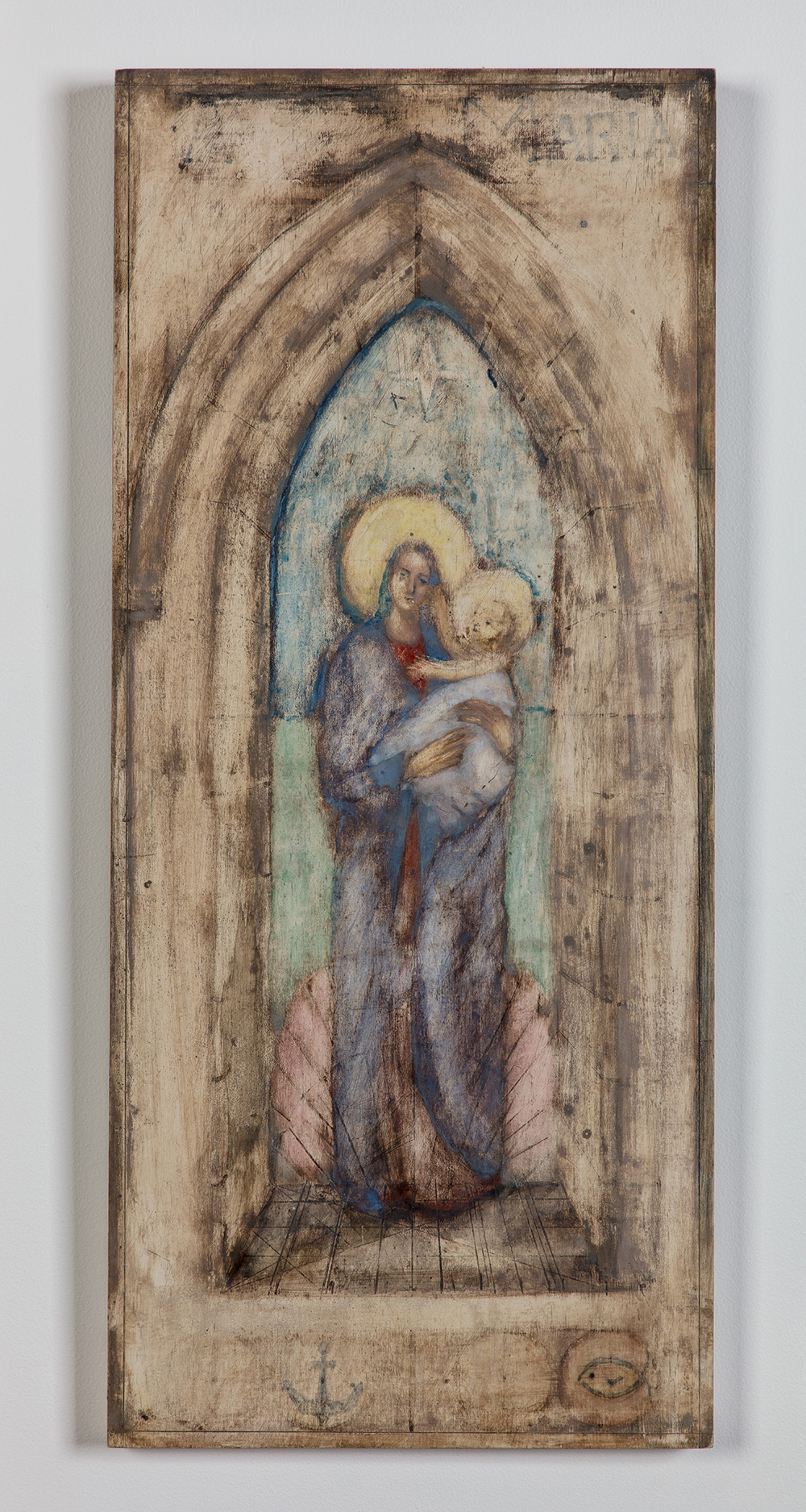
Tempera Grassa on gesso panel
Jacqueline studied fine art painting at the Slade School of Fine Art achieving an Honours degree and continued her studies in painting with a Masters at the Prince’s School of Traditional Arts to further her spiritual practice of painting, with a particular interest in Icons and Symbolism.
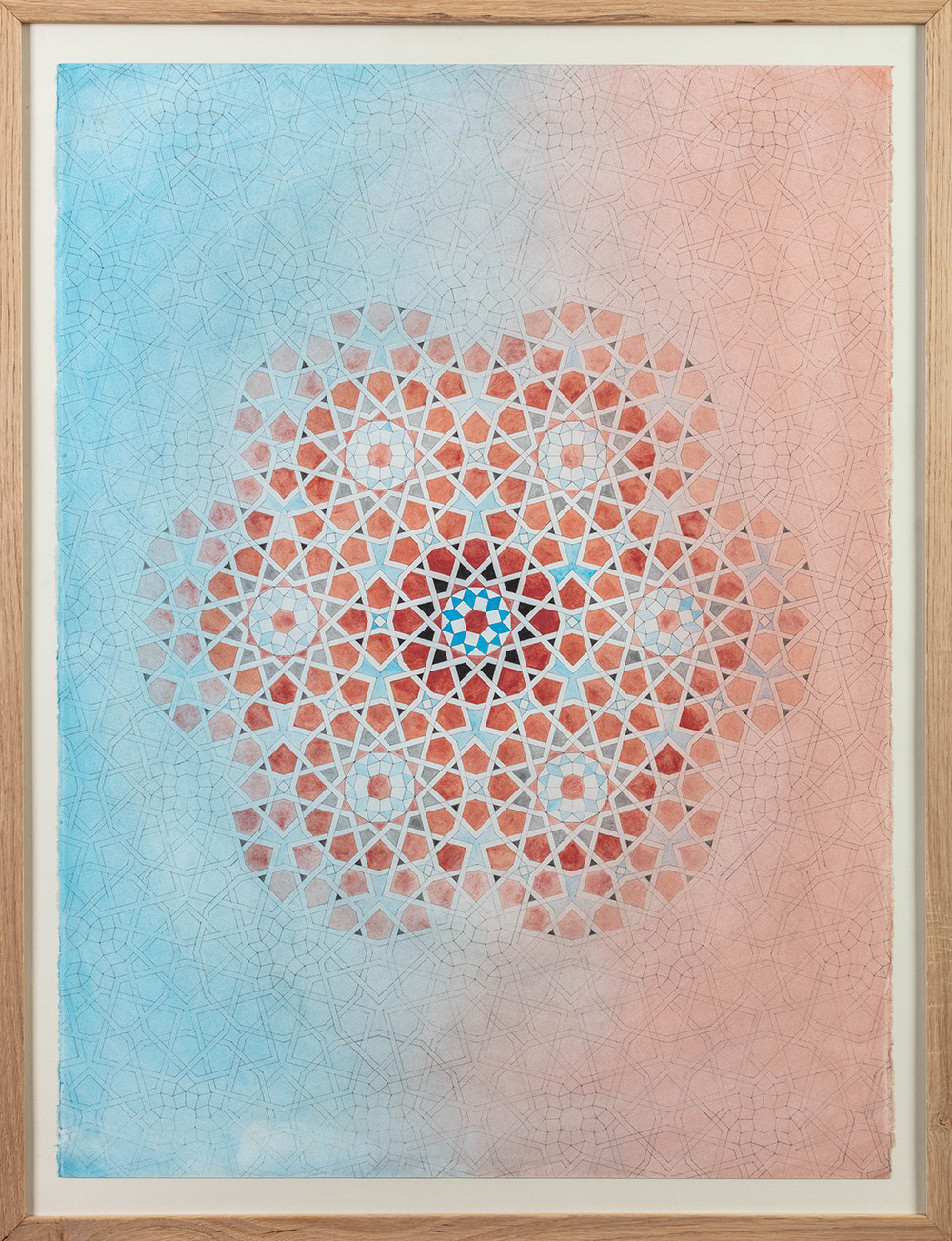
Watercolour paper, Indian wash technique, natural pigments, handmade watercolours
Despite coming from a conservative family where education is not considered important, she has pursued her passion for art and excelled in her field. Hira obtained her Professional degree in Indo-Persian miniature paintings from Karachi School of Arts (Karachi, Pakistan). Additionally, she completed a bachelor’s degree in arts from the University of Karachi.
To further enhance her skills and knowledge, Hira pursued a one-year diploma programme at the VM Centre for Traditional Arts Karachi. During this programme, she developed a fascination for the art of illumination and geometry. Hira explored the concepts of geometry and biomorphic designs, which aided her in understanding the underlying hidden geometry in the original Quranic manuscripts.
This knowledge also helped her in exploring geometry and biomorphic patterns in monuments across Pakistan. Currently, Hira is undertaking an apprenticeship with Ayten Teryaki, one of the Turkish masters.
This opportunity allows her to learn from an experience artist and refine her skills further. This collaboration may expose Hira to new technique, styles, and perspectives, enriching her artistic abilities. Hira’s dedication to her craft and her pursuit of opportunities for growth demonstrate her commitment to becoming a skilled artist in the field of miniature paintings, illumination, and geometry.
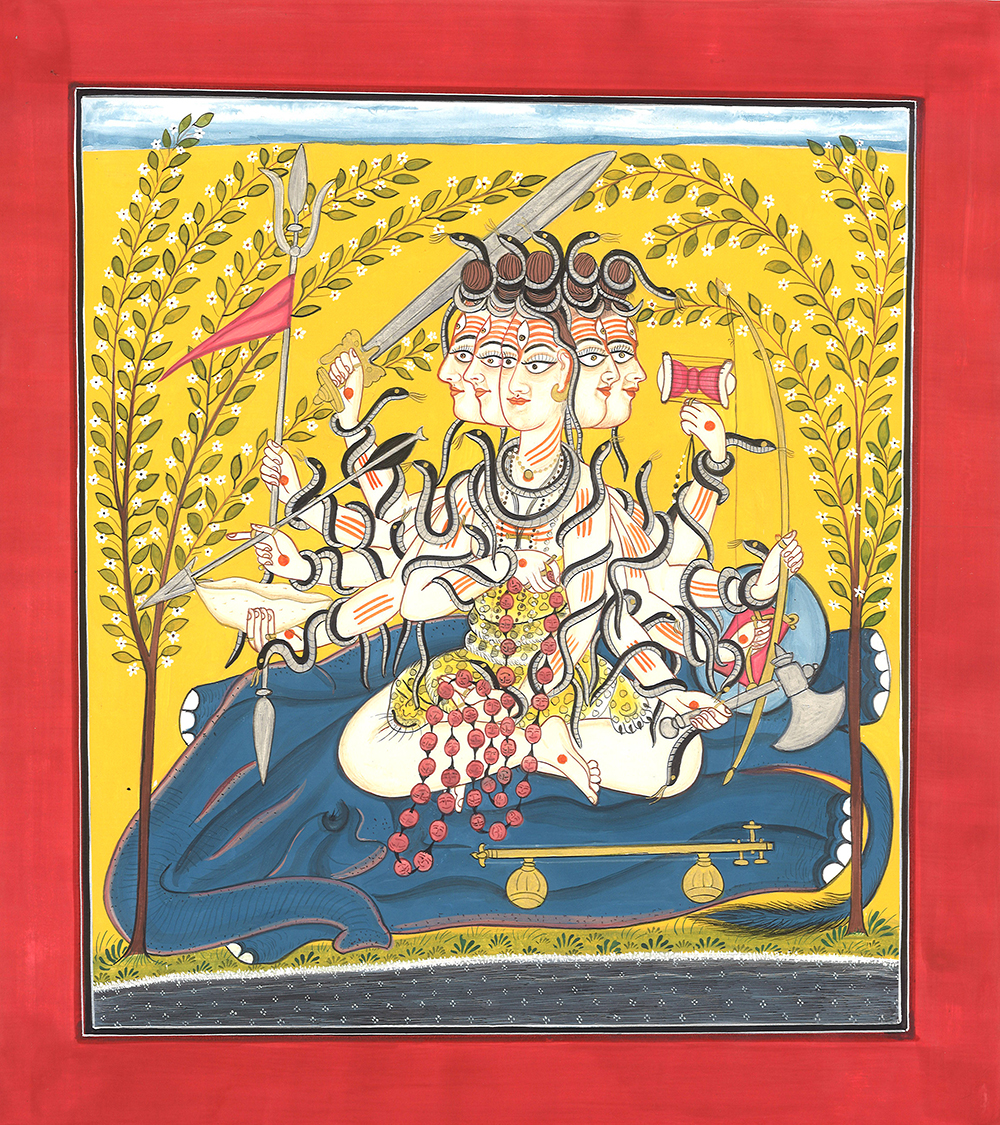
Natural pigments, with shell gold and silver, on wasli paper
Lalita comes from the city of Hyderabad, India and spent three decades as a professional vocalist trained in South Indian Classical Music before embarking on a Masters at the Prince’s Foundation School of Traditional Arts, completing a M.A. in South Indian Music.
Lalita’s repertoire consists of numerous artistic traditions of India, including Basohli, Tanjore and Mysore traditions. Elements from Indian iconography, and specifically, themes from Indian mythology often feature as her subjects. Through her practice she aims to represent spiritual philosophical themes from Classical India.
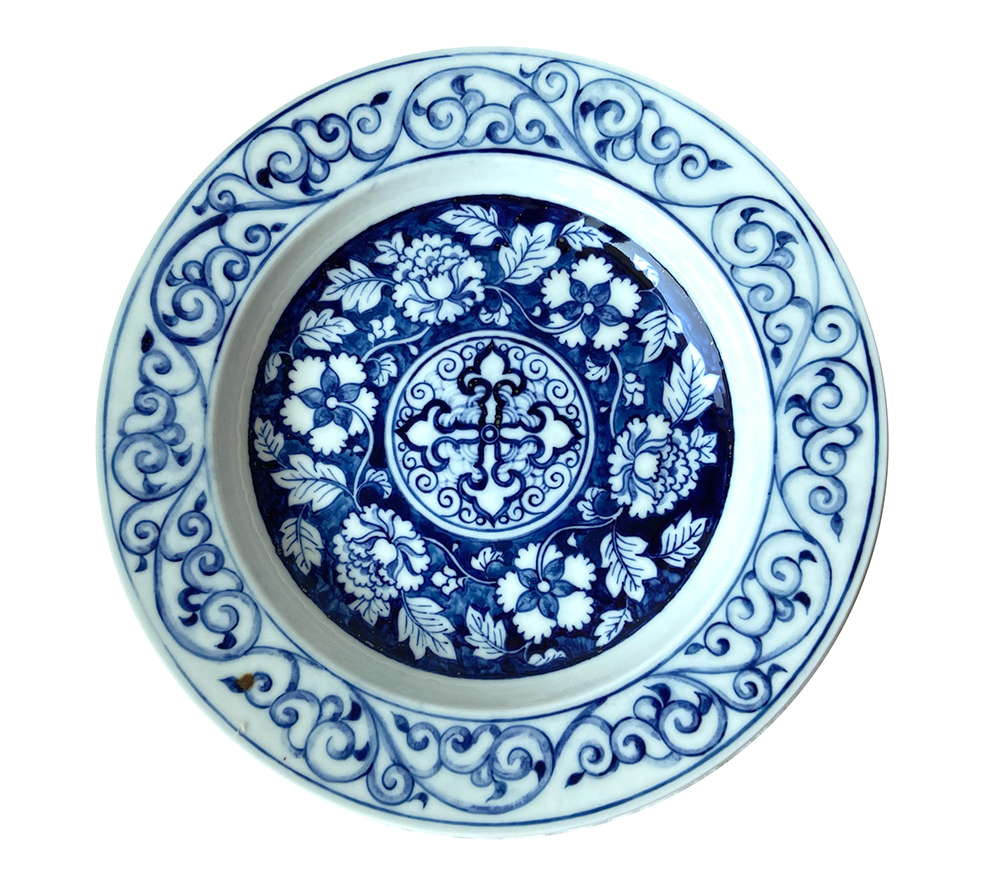
Blue and white porcelain
Ran Li is a Fine Artist with specialisations in painting, illustration and traditional arts, she is currently researching ceramic patterns as part of her PhD studies at the Prince’s Foundation School of Traditional arts in London, UK.
From 2009 she studied in London, UK, and completed a Diploma in Fine Art at Chelsea College of Art, and then an MA in Illustration at Camberwell College of Arts.
In 2016 she completed her second MA at The Prince’s School of Traditional Arts, awarded with Distinction. She was invited to introduce her artworks to Chinese President Xi Jin Ping and Lady Peng Li Yuan during their official visit to the United Kingdom in October 2015.
Since her MA graduation, Ran has developed her teaching skills over many workshops and teaching sessions delivered by the Prince’s Foundation School of Traditional Arts in China.

Rice Paper, water colour
Born in Beijing, China (1974), Fangfang Liu took her master degree at the Prince’s Foundation School of Traditional Arts London (2016-2018). She was awarded the Ciclitira Prize for her final degree show in 2018. Before PFSTA, Fang learned oil painting at the China Central Academy of Fine Arts between 2010 and 2011, and worked as assistant curator for Pingyao International Photography Festival, 2003.
As a continuation of her PFSTA degree show, Fang explored in greater depth Chinese Gongbi Painting, which is demonstrated in her work. Gongbi is one of the oldest Chinese painting techniques, depicting narrative subjects with detailed brushstrokes and a quintessential Chinese identity while vividly reflecting contemporary life. Fang has studied Gongbi Painting since 2013. In 2018, she studied with Donghua Zhang from the China Central Academy of Art.
Based in Beijing China, Fangfang Liu is the vice curator of Beijing Dongyue Art Museum, and the member of China Committee for Promoting Art Education.
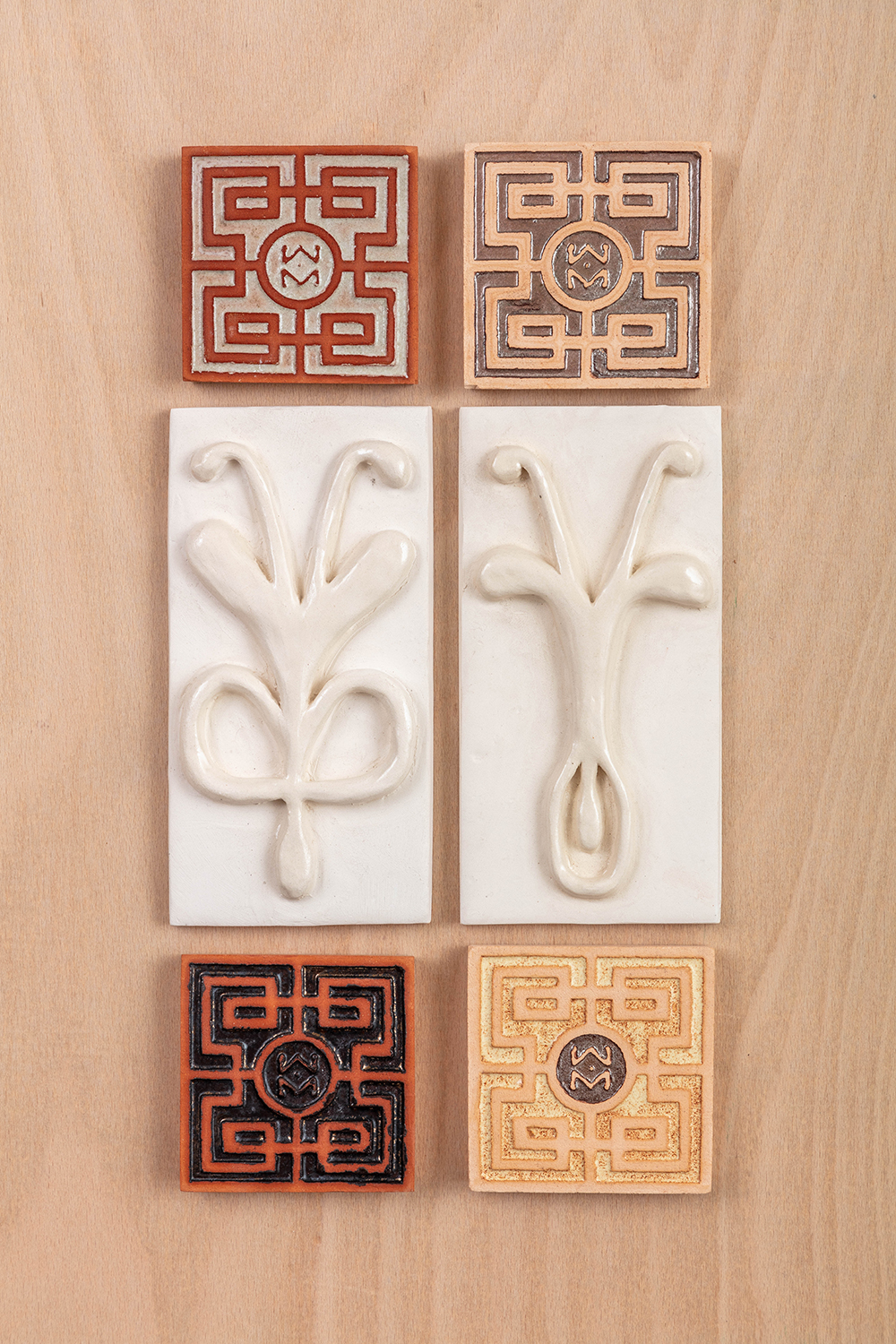
Reclaimed clay, Glaze
Crystal studied fine art and plant biology for her undergraduate degree, during which she took a course on Taswirkhana, her first introduction to a non-western traditional art/craft. Its outlook on artmaking is meditative, contemplative and humbling in nature and drastically different from the conceptual, contemporary western art world to which she was accustomed.
Crystal is drawn to the grotesque and humorous aspect of sacred art that investigates the torment of the human soul.
In it, she looks for themes and shapes which connect modernity and history in an attempt to understand and unpack this world. Crystal was awarded a Watson Fellowship during which she will travel to Estonia, Lithuania, Palestine, Uganda, Belgium and India to explore musical subcultures that refract traditional, regional musical culture through a modern, electronic lens. She is in search of the sounds and mantras within sacred spaces in hopes of understanding the meaning of Nada Brahma.
Crystal is the 2023 recipient of the PFSTA Ciclitira Prize.

Underglaze and luster on ceramic tiles with African sampele wood frame, all painted by hand
Xiaoxiao is an architect, based in Beijing China, with a BA in Architecture and MA in Traditional Arts.
Traditional patterns are always an important language for us to connect with history, its invisible geometry still guiding us today. Xiaoxiao spent 5-years studying architecture at China Central Academy of Fine Art, before completing a MA in Traditional Arts at PFSTA (2019). In 2018 they participated in a heritage restoration project in Khiva, Uzbekistan, and began research of the Islamic patterns and architectural elements of middle Asia.
Two years of study at the PFSTA had a profound impact on the artist’s study of traditional art and architecture. They work at the Department of Cultural Heritage Conservation at an architecture firm at Tsinghua University, and continues to use the method of the Khiva project to research heritage.
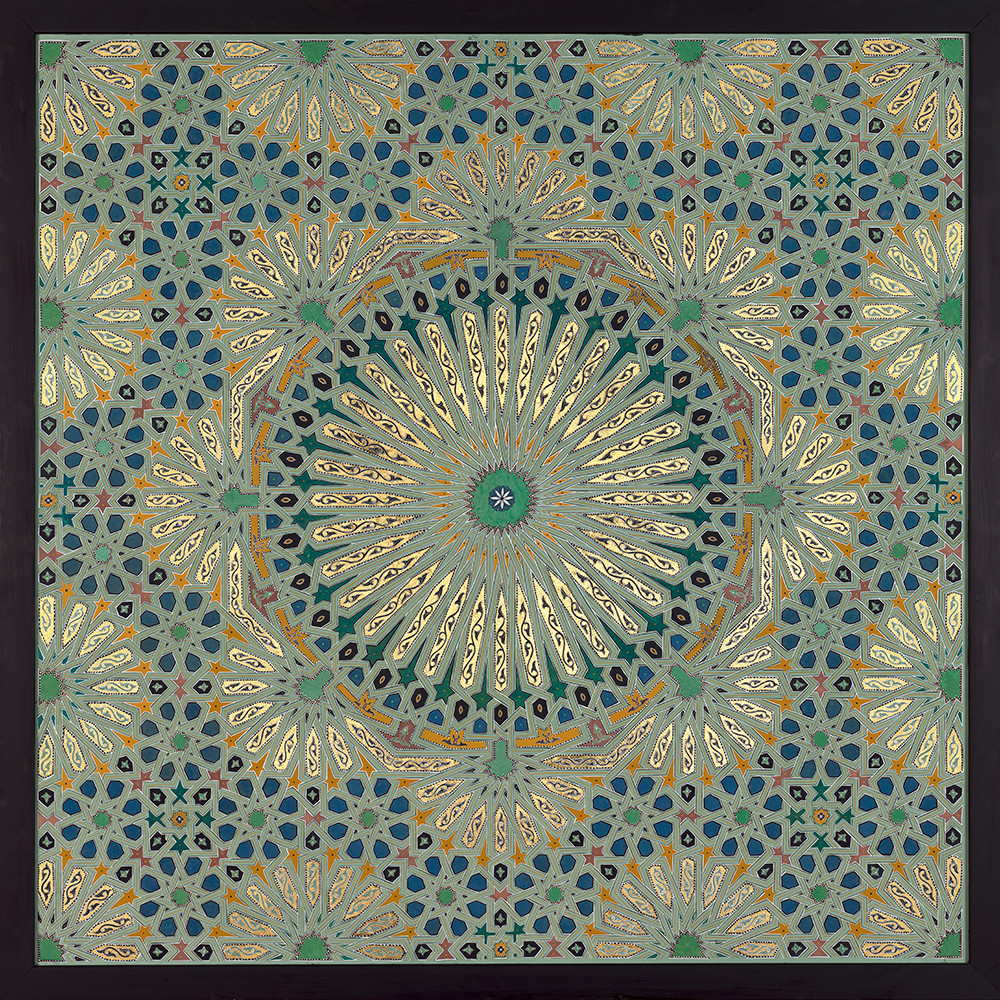
Natural pigments with egg tempera and 24 carat gold leaf on wood
Natasha is an artist who uses traditional methods to create bespoke pieces for interiors and fine artworks. Her work is inspired by decorative art traditions from around the world, with a particular focus on traditional Moroccan architectural painting on wood. She studied this form of Moroccan decorative painting during a year-long apprenticeship with a Master in Fez.
All her pieces are made from natural materials, using hand ground pigments mixed with egg tempera and 24 carat gold leaf. Her geometric designs are all hand drawn using a compass and ruler.
Natasha holds a degree in Arabic and French from The University of Cambridge, an MA in Spanish and Moroccan Medieval Art from the Courtauld Institute of Art and an MA from the Prince’s Foundation School of Traditional Arts, which was funded by the Queen Elizabeth Scholarship Trust (QEST).
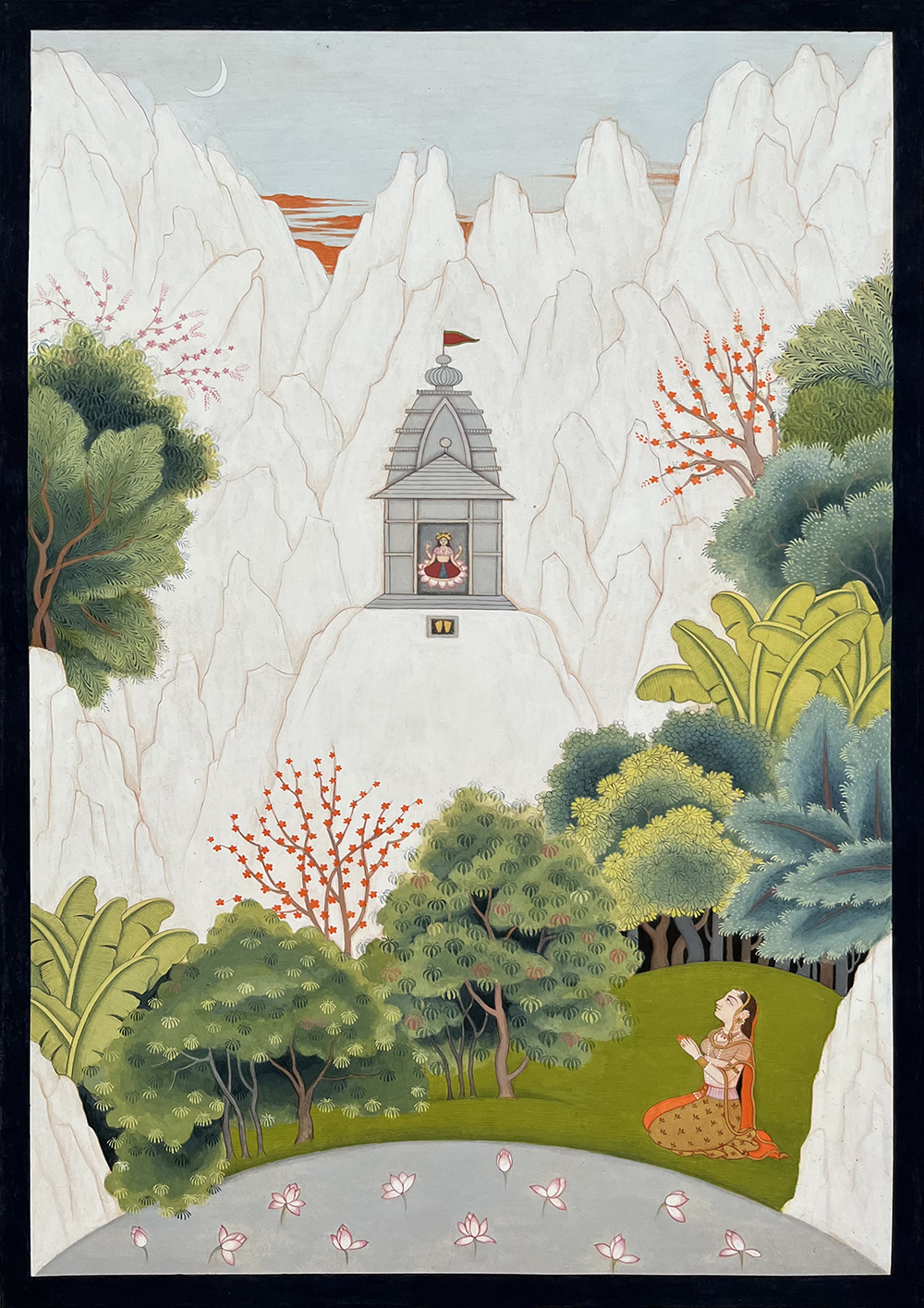
Natural pigments and 23.5ct shell gold on handmade Indian hemp paper
Susana Marín is a visual artist, researcher, and educator. Her work is inspired by the Guler and Kangra idioms of Indian Pahari painting and by patterns of traditional and sacred geometry.
She apprenticed in India with masters from Himachal Pradesh and Rajasthan including Padma Shri Vijay Sharma in Chamba and Manish Soni in Bhilwara. In her studio practice she works with natural pigments and handmade paper, using the techniques and materials of traditional Indian painting. She holds a PhD for her dissertation on the Living Tradition of Pahari Painting from the Prince’s Foundation School of Traditional Arts, London, where she also teaches Indian miniature painting.
She conducts workshops internationally and her work has been exhibited in Europe, U.S.A, and the Indian subcontinent.
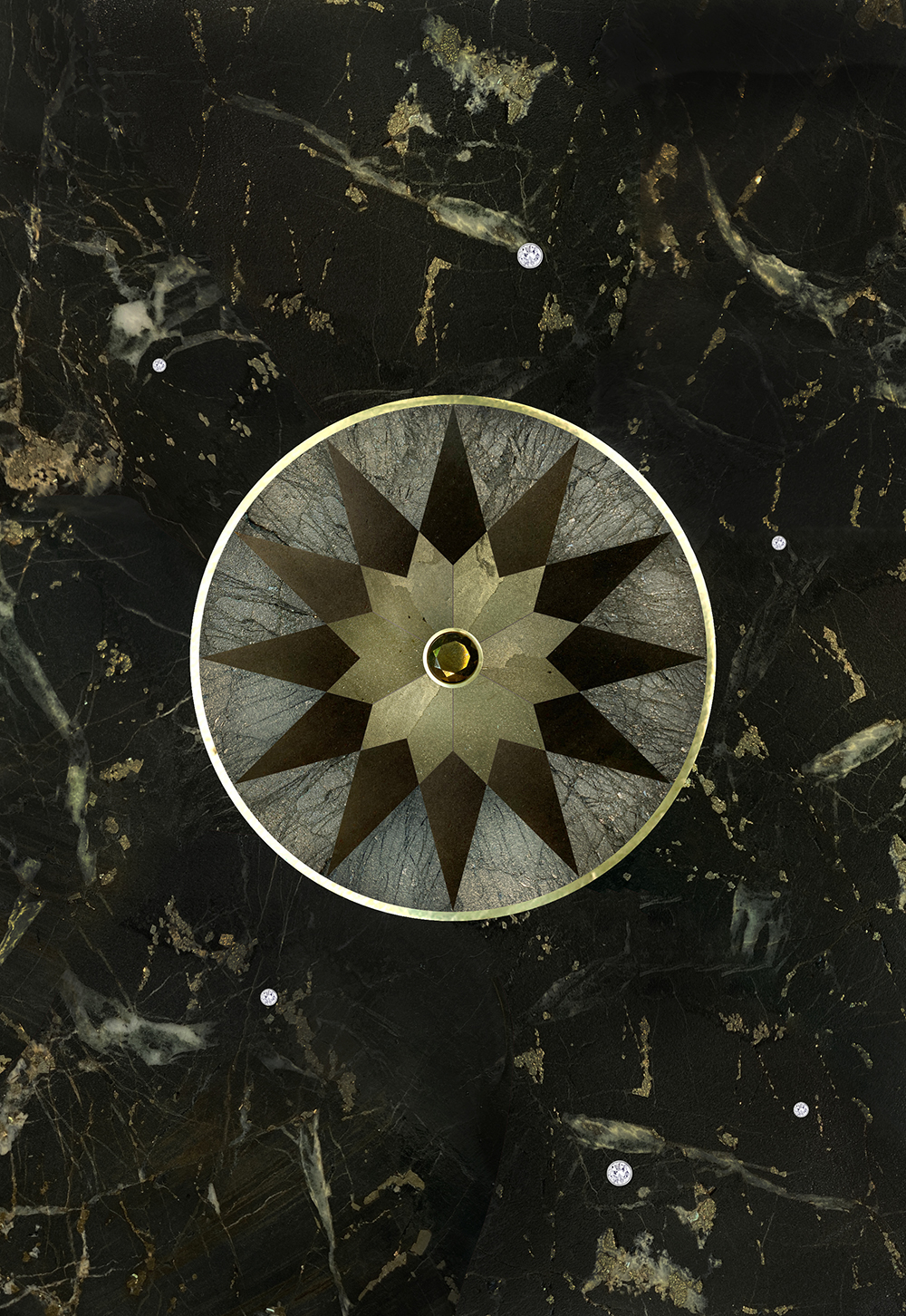
Semi precious stones, Pyrite, Skodorite, Pyrite on Slate, Black Jasper, gold and silver
Based in Germany artist Aline Marion works in a wide range of traditional craft techniques including semi - precious stone cutting and inlay, wood carving, painting, jewellery and textiles. She has a thirst for transforming natural materials from a rough to a refined form and deeply connects with them with an unusual ease.
Her passion for understanding the governing laws of the universe has led her to study subjects such as alchemy and cosmology. Aline runs her own studio where she creates original and commissioned artwork. She won the Kairos award from Keith Critchlow for her Masters degree show at the Prince’s Foundation School of Traditional Arts in 2013 and designed the stone crest for the burial site of the recently uncovered remains of Richard III.
Aline has taught various craft techniques in different parts of the world, including Brazil, England, Germany, Azerbaijan and Saudi Arabia.
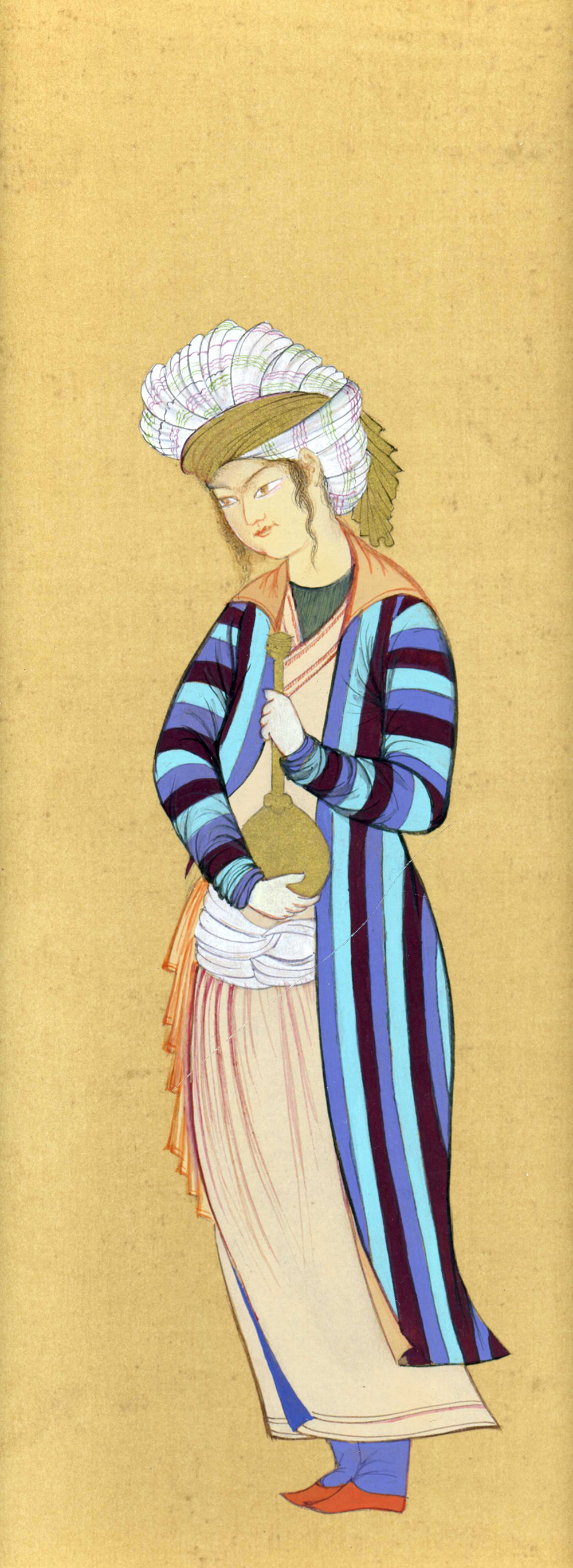
Gouache & watercolour
In 1998 Mariam joined Azad University’s art department as a student of carpet design, her portfolio work focused on carpet design. She then went on to further her knowledge of carpet design with established masters of the art located within local Bazars. Along with attending specialist courses held within the Shrine of the 8th Shi’a Imam, she passed in all the traditional skills being taught within the Shrine’s school which are popular in Iran.
To enhance her skills, she also pursued a course of study at Chelsea and Kensington college as a fine art student before enrolling at the Prince’s Foundation School of Traditional Arts. Fascinated by Islamic Arts led to enrolment as a postgraduate student with the Islamic college.
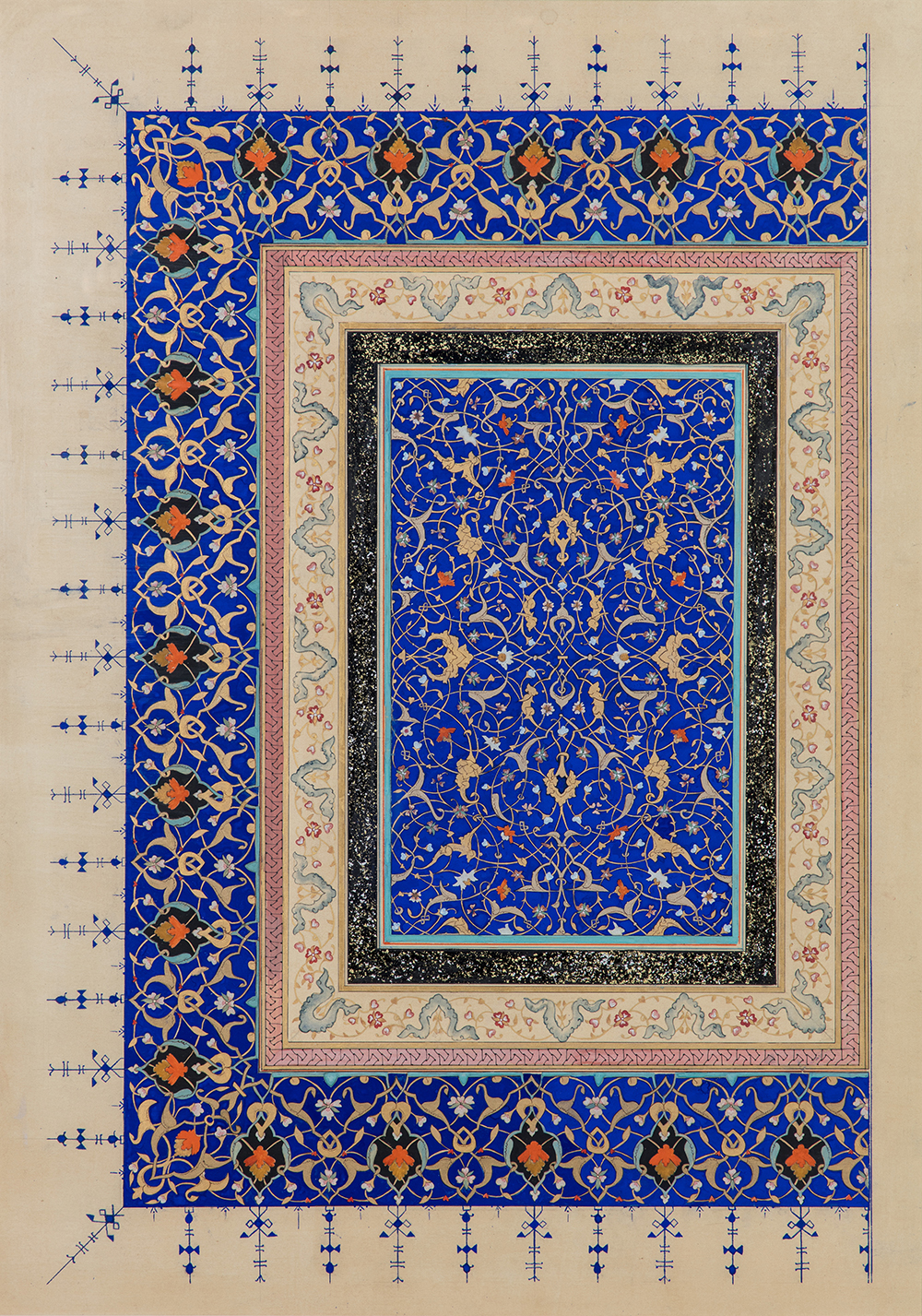
24k Gilded Gold Leaf, 2k Shell gold and natural pigments(water colour) on Indian wasli paper
Shadiya Mohammed, an accomplished artist hailing from Kerala, India, known for her exquisite work in Islamic Illumination or Tezhip. Born and raised in a culturally rich environment, Shadiya’s passion for traditional arts began at a young age. Her artistic journey led her to pursue a Master’s degree At the Prince’s Foundation School of Traditional Arts where she honed her skills and expanded her artistic horizons.
With a deep appreciation for the intricacies of Islamic Illumination, Shadiya has dedicated herself to mastering this ancient art form. Her meticulous attention to detail and mastery of geometric patterns bring life to her artwork, capturing the essence of Islamic aesthetics and spirituality. Shadiya’s ongoing pursuit of excellence is reflected in her commitment to obtaining her ijaza, a formal certification of her skills and knowledge in Islamic Illumination. Her work has garnered recognition for its harmonious blending of tradition and innovation, earning her acclaim among art enthusiasts and collectors alike.
Through her art, Shadiya strives to evoke a sense of serenity and awe, inviting viewers to embark on a visual journey that celebrates the beauty of Islamic culture and heritage.
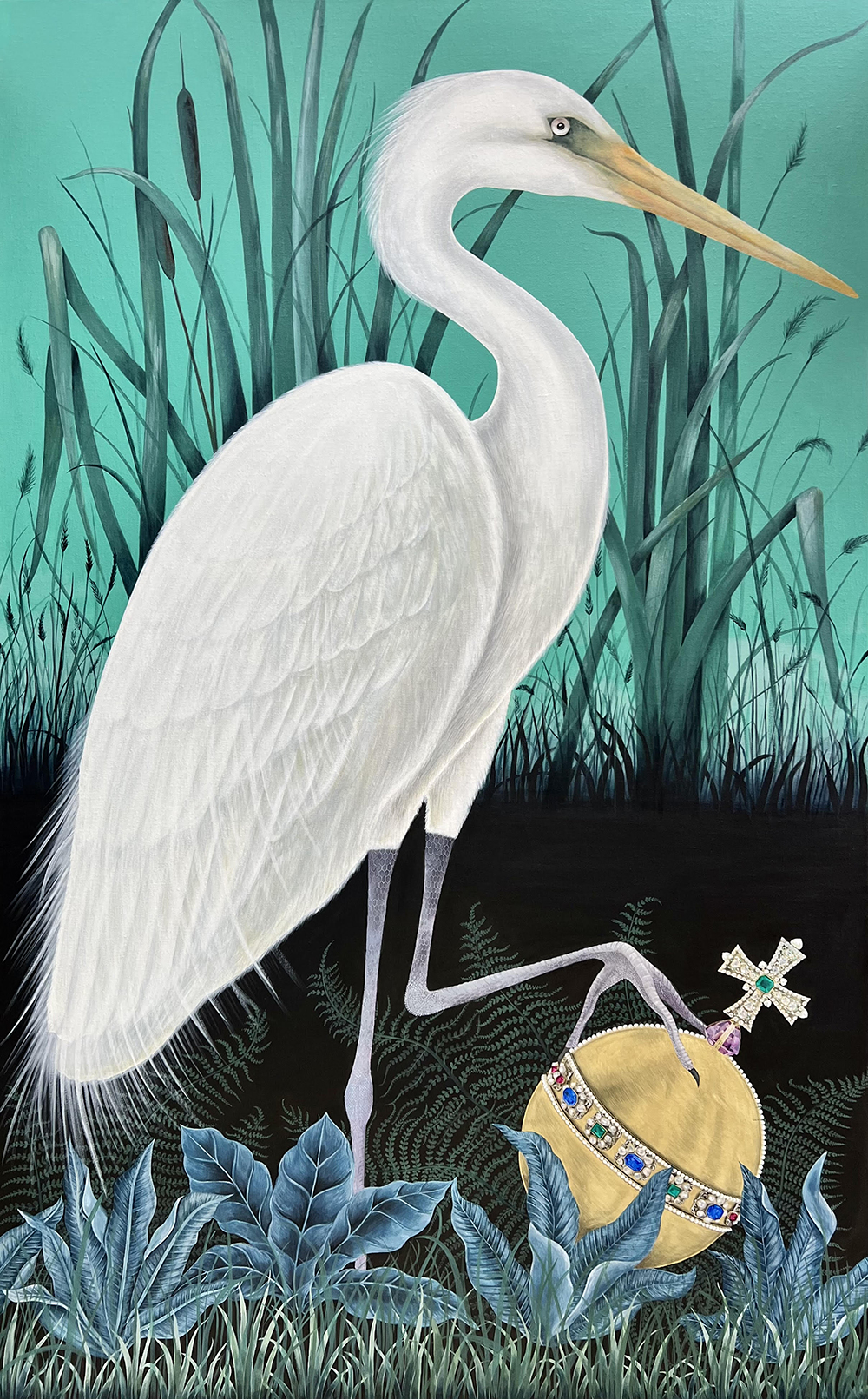
Mixed media and 18k gold leaf on canvas
Lucy Thomasin Morrish is a British Fine Artist specialising in the ancient painting traditions and techniques of the middle ages. These traditions were passed down to her having gained a Scholarship to study at the prestigious Prince’s Foundation School of Traditional Arts in London.
The rich traditions and Arthurian Legends of Medieval Europe cemented Lucy’s love for Icon painting and illuminated manuscripts which influence her to the present day.
She can most notably been known for the design and painting of the Coronation Collection for Fortnum & Mason’s in London. Among the brood of magical beasts Lucy created for Fortnum’s are the Imperial Egrets which grace the Coronation Organic Darjeeling Tin, and the noble White Hart which can be spotted throughout the Coronation Collection. At once modern and timeless, powerful and ethereal, precise and vibrant.
Lucy’s work elevated the Coronation creations to the level of treasured keepsakes, for generations to come.
Lucy won the PFSTA Ciclitira Prize.
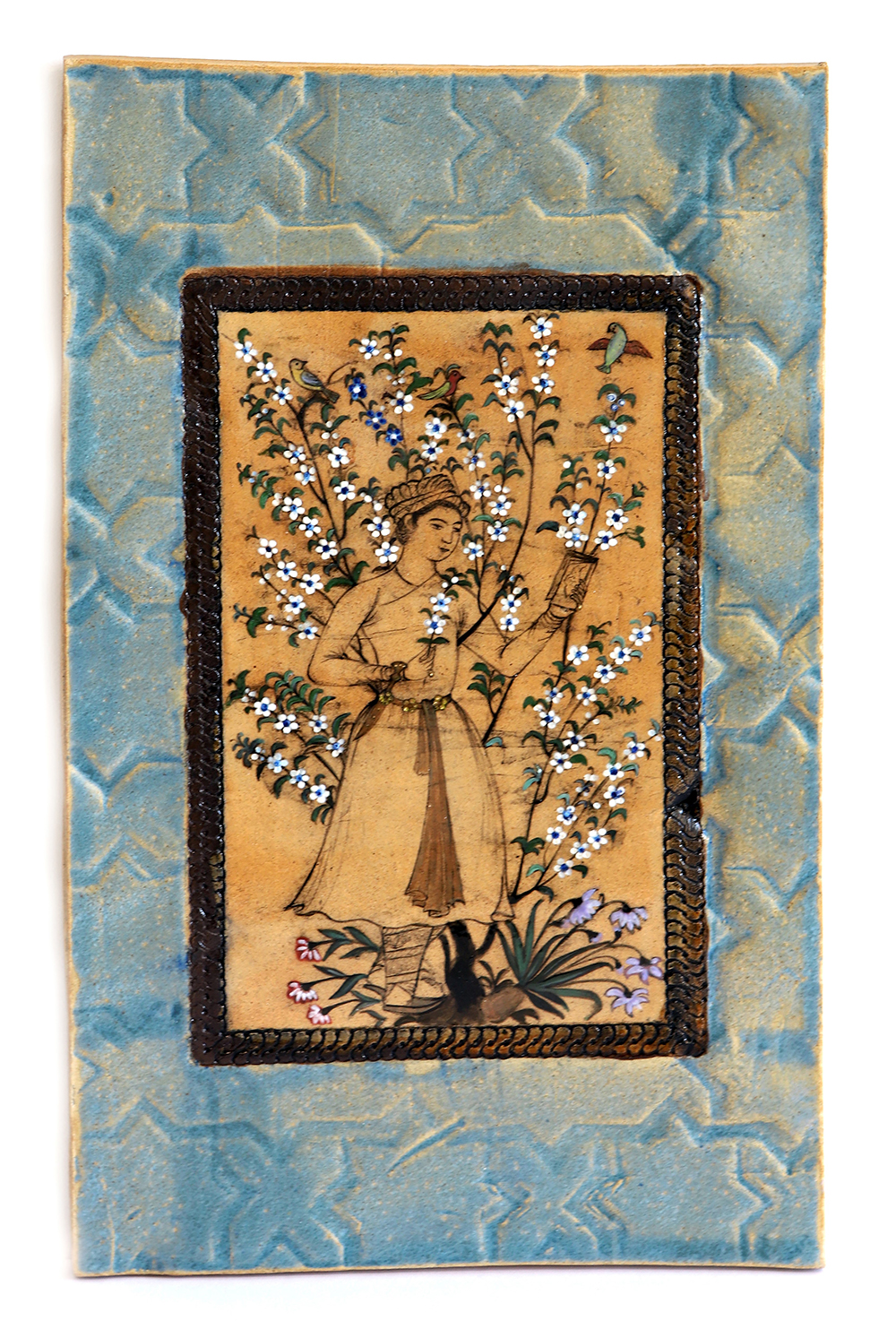
Handmade stoneware tile carved, hand drawn image based on a 17th century painting currently held at the British Museum, decorated with polychrome glazes and gold lustre
Mariam Motamed is an Iranian-British artist trained in some of the traditional arts & crafts of different cultures. Her artistic process serves as a vehicle of meditation and reflection through which she searches for the wisdom and alchemy of life and those universal and timeless values that, she believes, reside within us and are reflected abundantly in the outside world.
There is a gift in taking the time and choosing to seek them. Her work celebrates the constants of our world that humanity cannot survive without; the beauty, harmony and majesty of the cosmos above and the ethereal beauty and goodness of the natural world below.
She has great affinity towards those media and processes that limit her control of the end result and finds the opportunity of surrendering control of the outcome to the medium both exciting and liberating. As such her preferred medium is clay and she has also recently been experimenting painting on water.

Handmade watercolour on paper
Janiece Murray is a student of traditional techniques and arts including gilding, geometry, and painting with handmade watercolours. Many traditional arts are connected to spiritual and religious beliefs, Murray also strives to include and reflect her beliefs in her work.
She studied with Wulf Barsch at Brigham Young University which led her to learn more about the craft of master artists and eventually to gain a Masters in Traditional Art at The Prince’s Foundation School of Traditional Arts. She now works to find the best way to incorporate what she learned into her artistic practice.
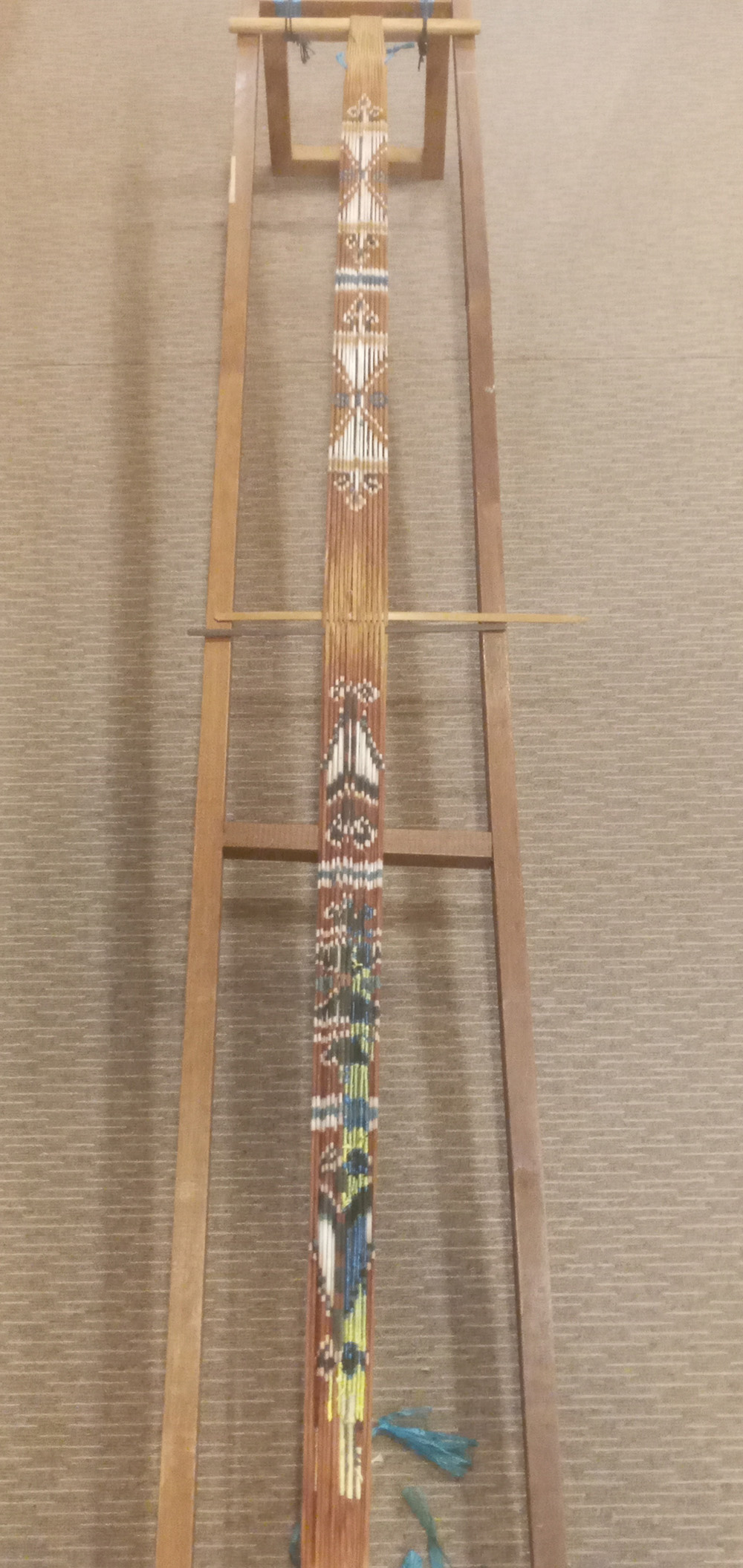
Natural Dye (Indigo, Sebanki and Sappanwood), Cotton
Ashly Nandong is an independent artist and cultural researcher, who is currently based in Kuching, Sarawak, Malaysia. In his artistic pursuits, he interchanges between contemporary visual arts, traditional artisan and performing arts, using Dayak and Southeast Asian inspired motifs and metaphors for markers and an anchor.
Since 2019 he has been attached to the Tun Jugah Foundation in Kuching, undertaking an apprenticeship in the Iban Dayak warp-ikat weaving textile, taking up another apprenticeship in woodcarving under the tutelage of woodworking artist Henry Muda (2023).
He graduated with a Master’s of Arts degree in Traditional Arts studies from the Prince’s Foundation School of Traditional Arts, London, UK in 2018 under the sponsorship of the British Malaysian Society.
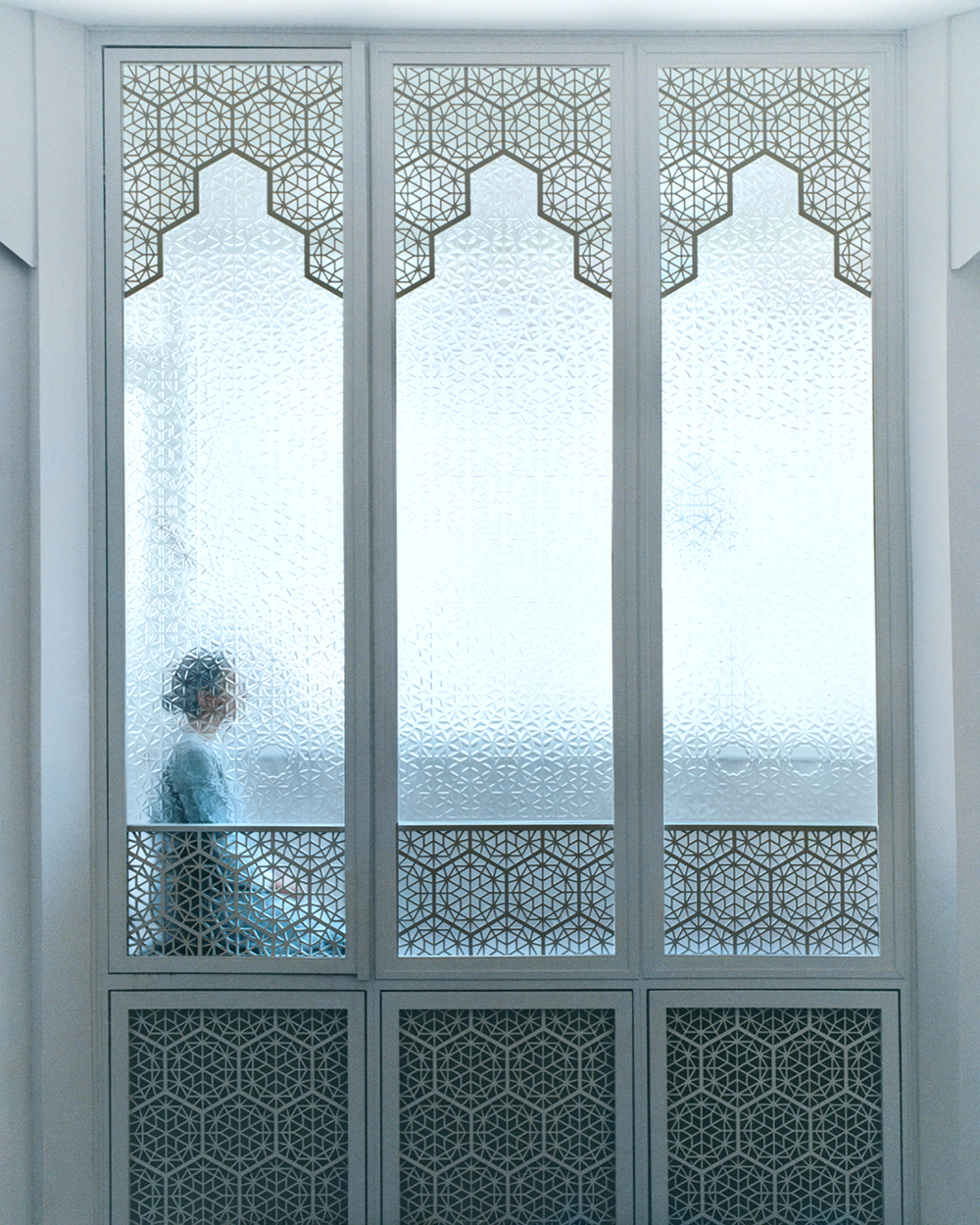
Architectural photograph
Dr Nevine Nasser is a London-based architect specialised in reinterpreting traditional architectural vocabularies to inspire contemplative experiences of space. Her PhD by practice, completed at PFSTA in 2020, attempted to reclaim the wisdom of the past by examining the ontological nature and metaphysical roots of classic Islamic sacred buildings with the view to create a transformative, contemporary Sufi community centre - The School of Sufi Teaching in Bethnal Green, London. Nevine’s architectural and academic work continues to explore the relationships between sacred space and spiritual experience, creative and spiritual practice, both collaboratively and individually around the world.
Photographs by Suleika Mueller. Born in Switzerland, based in London, Suleika was brought up in a Sudanese Sufi Muslim order. She has spent the past years crafting her own unique voice, drawing on her upbringing; criss-crossing geographical and religious divides, as well as tension around identity created by her dual cultures.
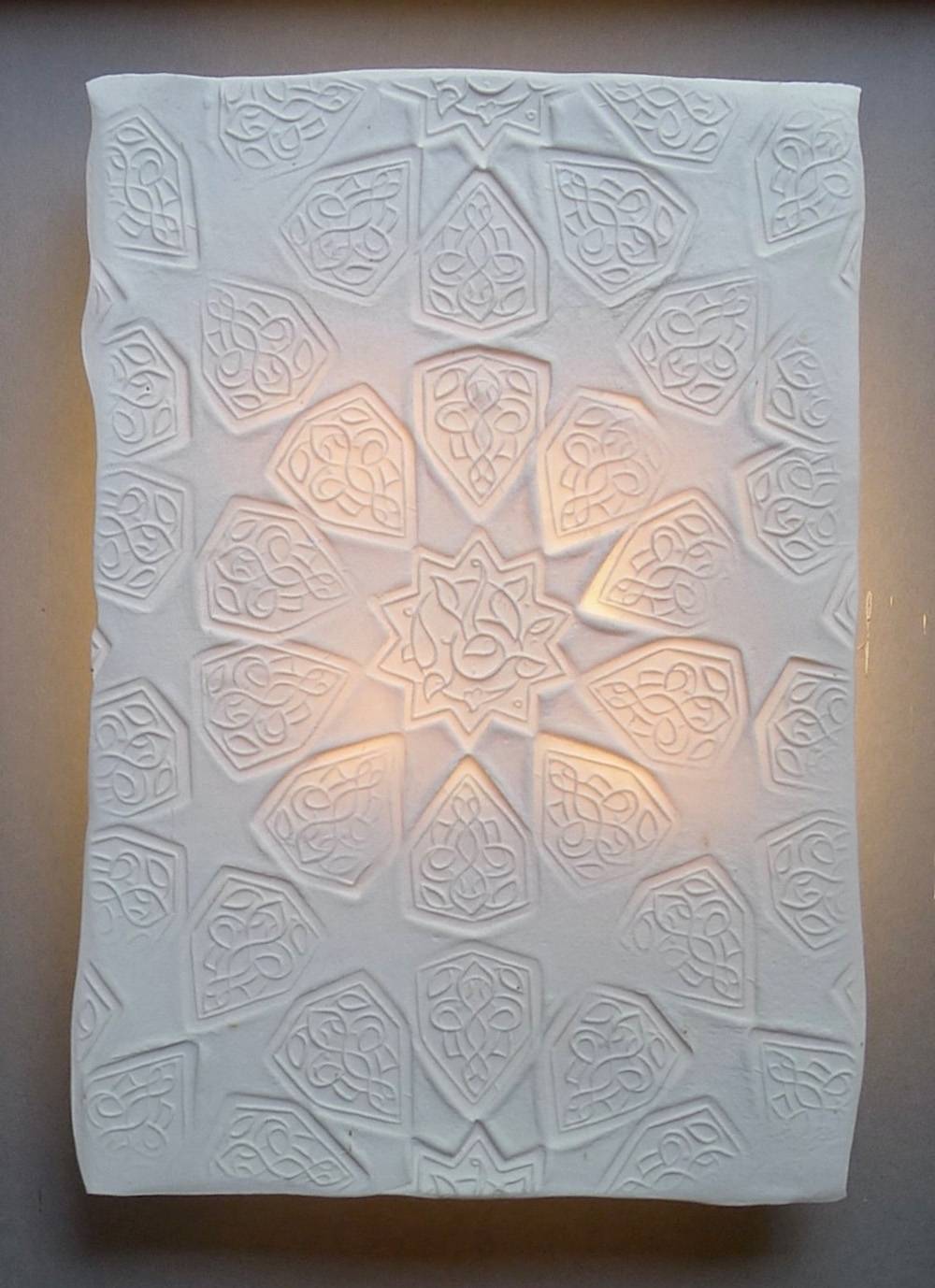
LED-lit oak framed porcelain screen
KATYA NOSYREVA is an artist and researcher based in the UK. Following her undergraduate studies at Camberwell College of Arts, London, Katya undertook several studio ceramics apprenticeships. Her interest in traditional arts brought her to the PFSTA, London, where she completed her MA and PhD studies. Her studio-based research project used the design of an architectural space as the point of focus for addressing larger questions in relation to contemporary traditional art and spirituality. Through drawing, working with translucent porcelain clay, and teaching, Katya’s current work focuses on the historical development and reception of Islamicate geometric patterns.
Her particular interest lies in extant medieval manuscripts on geometry and architectural scrolls where diagrams and text elucidate, and sometimes obscure, our understanding of the transmission of knowledge, offering tantalising glimpses of the working methods of craftsmen and the thought processes behind the transition from theoretical geometry to applied ornamental architectural solutions.
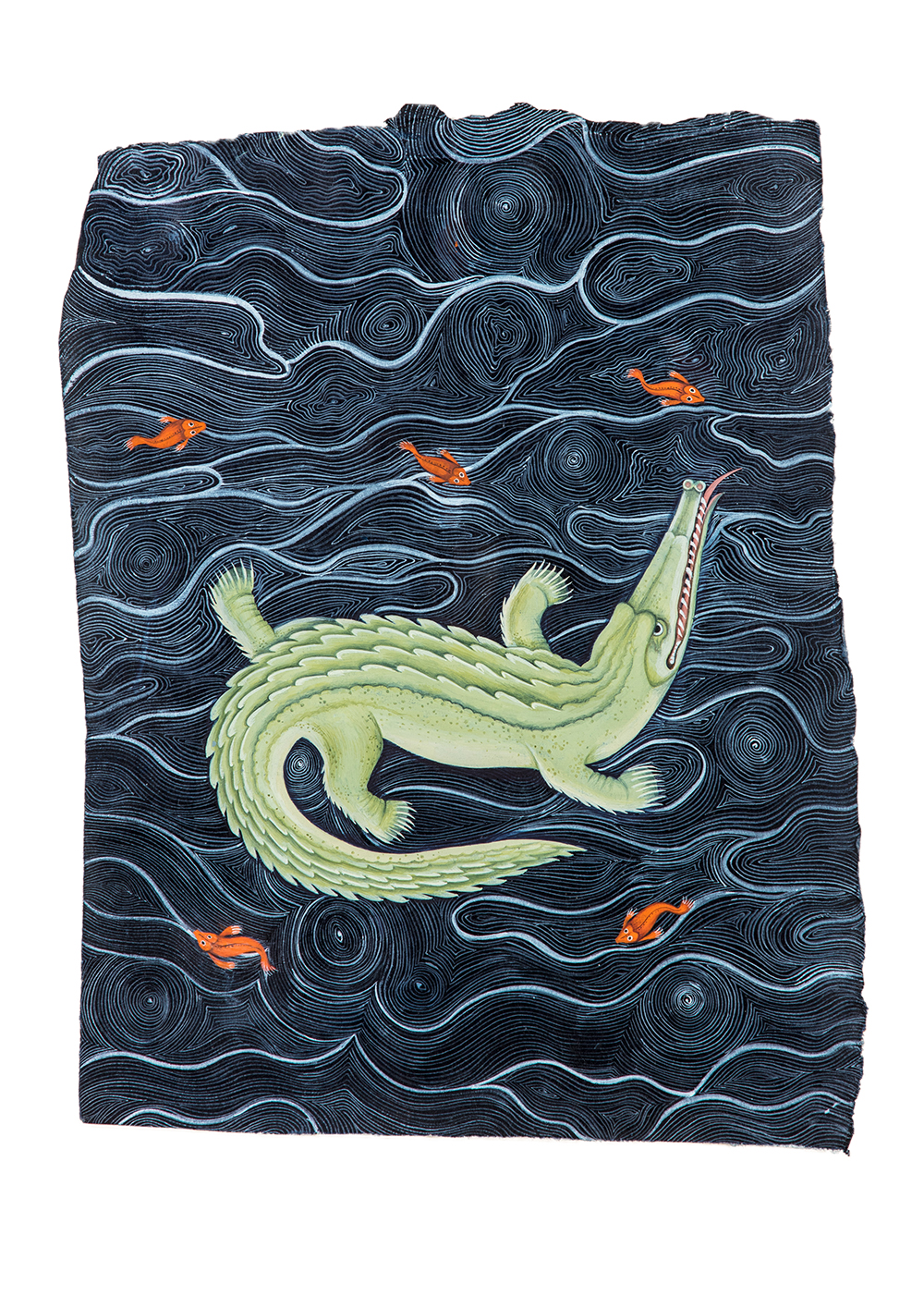
Natural Pigments on handmade indigo wasli, heightened with Muscovite crystals
Simran Kaur Panesar is a Kenyan born artist, living in London, with roots hailing in Punjab and India. From Indian and Persian miniature painting, to motif, pattern work and fresco designs, Simran’s work follows a path deep in the culture and history of the Sikhs, exploring the rich traditions of her religious identity alongside her present identity living as a Sikh artist in the 21st century. Her work takes form around many stories linked to her faith, culture, memories of home, utilising the natural world to bring these into form.
Simran Kaur Panesar has trained under the guidance of a range of traditional arts practitioners and holds a range of painting and material skills in the traditional arts. Her own work follows the Indian miniature painting tradition, with some influences from Persian miniature painting to bring her narratives to life. She currently works with naturally sourced materials and mediums, focusing on preparing her material as part of her process. From stone pigments, to creating Indian ‘vasli’ paper, Simran Kaur Panesar’s practice focuses not only on the process of painting but every step beforehand that transcribes the inner into physical form. She also places importance in traditional techniques of making and painting to keep these traditions alive and work within processes that are close to her heritage. By bringing these techniques into more contemporary narratives and modern contexts, Simran merges these timelines together, creating works that are not only relevant and are close to the hearts of many now, but hold significance within worlds past.
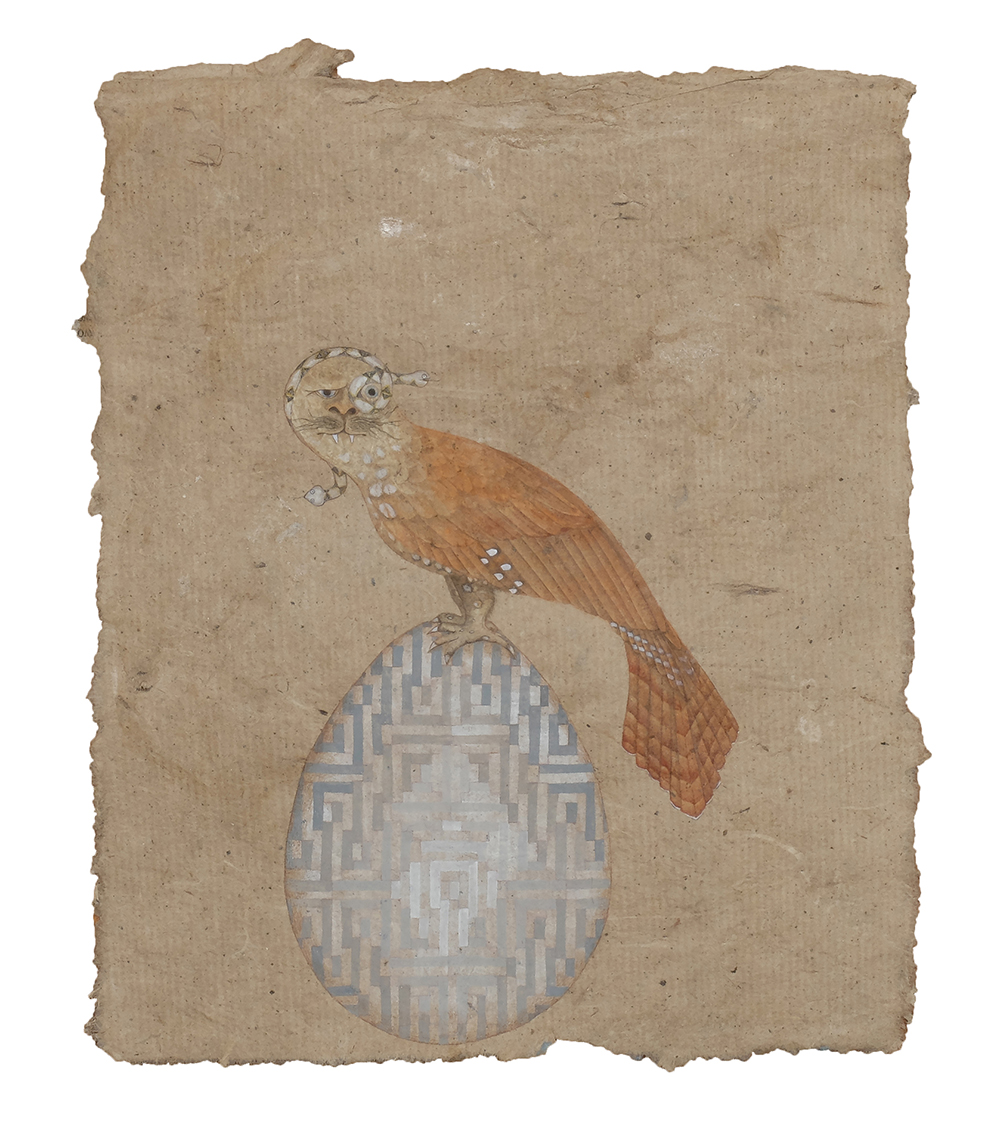
Handmade pigments on mulberry paper
Captivated by the symbolic universe so present in the oral tradition and in archaeological pieces, Amaranta Peña re-contextualizes them in her practice-ritual of preparing materials and in her paintings.
She completed her degree in Anthropology at the Salesian Polytechnic University of Quito and her interest in the integral well-being and liberal arts education led her to explore the fine arts and crafts of different cultures, completing her Master’s Degree in Traditional Arts at the PFSTA in London in 2020. Amaranta was the winner of the Ciclitira Prize in 2020.
Her artwork is inspired by the materials, beings, and forms found in the natural world and in wildlife.
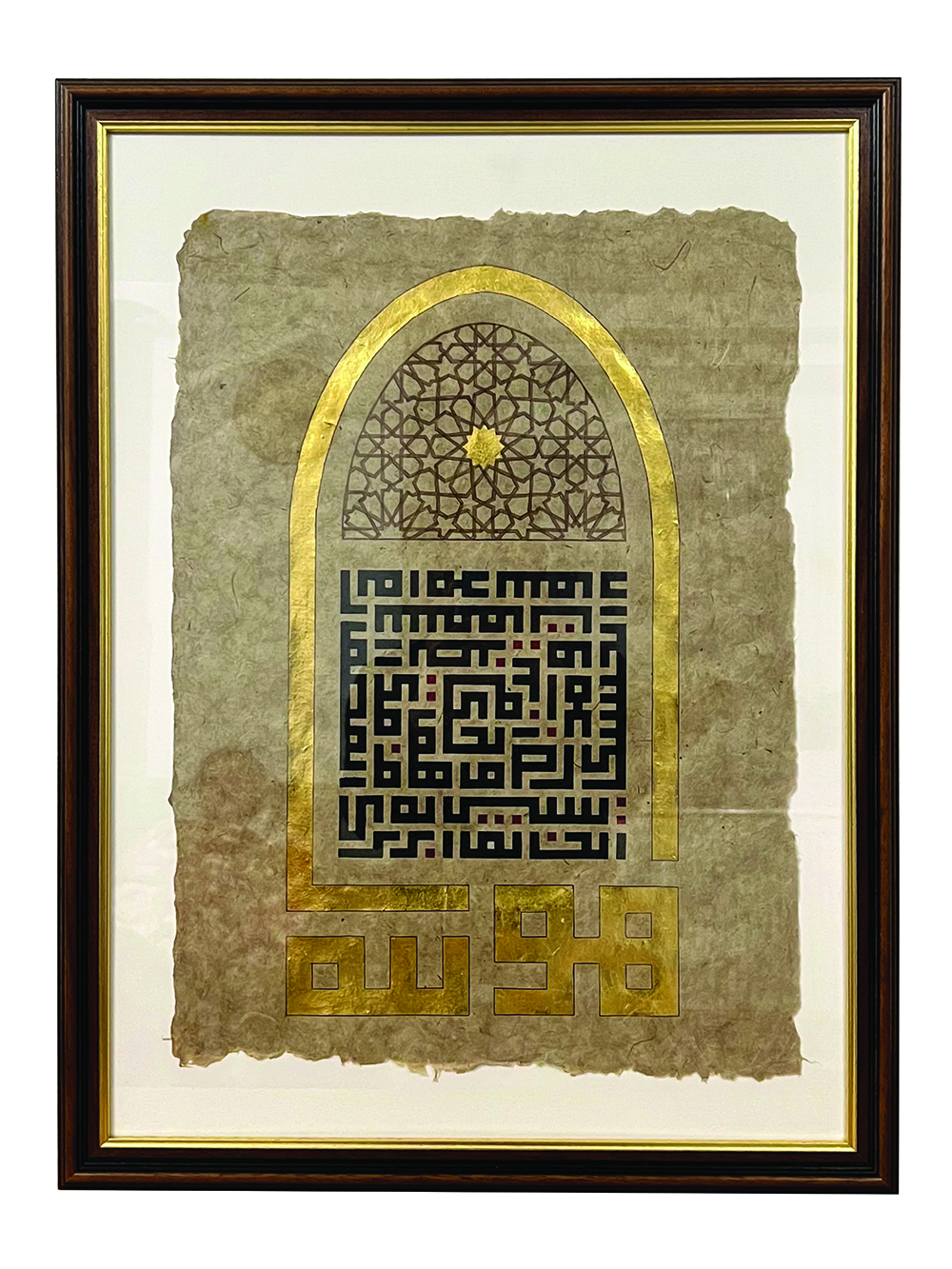
Japanese ink, Walnut ink & 24ct Gold on handmade wasli paper
Samiur Rahman is a creative artist and designer specialising in Arabic Calligraphy and the Traditional Arts. Deep-rooted within the Islamic tradition, Sami started off his journey studying Islamic Theology. It was there he discovered the sacred art of Arabic Calligraphy and has since devoted himself to learning and practicing the art.
He graduated from PFSTA in 2017 where he was awarded the Bagri Prize for specialising in Arabic Calligraphy and Geometry applied to various mediums.
Having studied calligraphy under various masters, Sami has training in Naskh, Thuluth, Nastaleeq and Kufic scripts. His work with calligraphy ranges from different techniques, working with wood, ceramics and plaster as well as the traditional ink on paper. His work has been exhibited all over the UK as well as the Museum of Islamic Arts in Malaysia. He has also worked with Mosques and Centres across UK designing their interiors.

Gouache and watercolour on watercolour paper
Chris Riederer is a prolific painter and pattern seeker. He is dedicated to the daily practice of geometric exploration and loves to express this passion through drawing, painting, and woodworking. He has developed a freehand methodology for drawing geometric patterns without the aid of a compass and edge, but is also devoted to the compass as a pure expression of the simple potency of geometric thought.
His work bridges the gap between traditional and experimental. Physics, Mathematics, Astronomy, and other scientific paradigms guide his intellectual interests, while traditional methods, materials, and symbolisms inform his artistic expression.
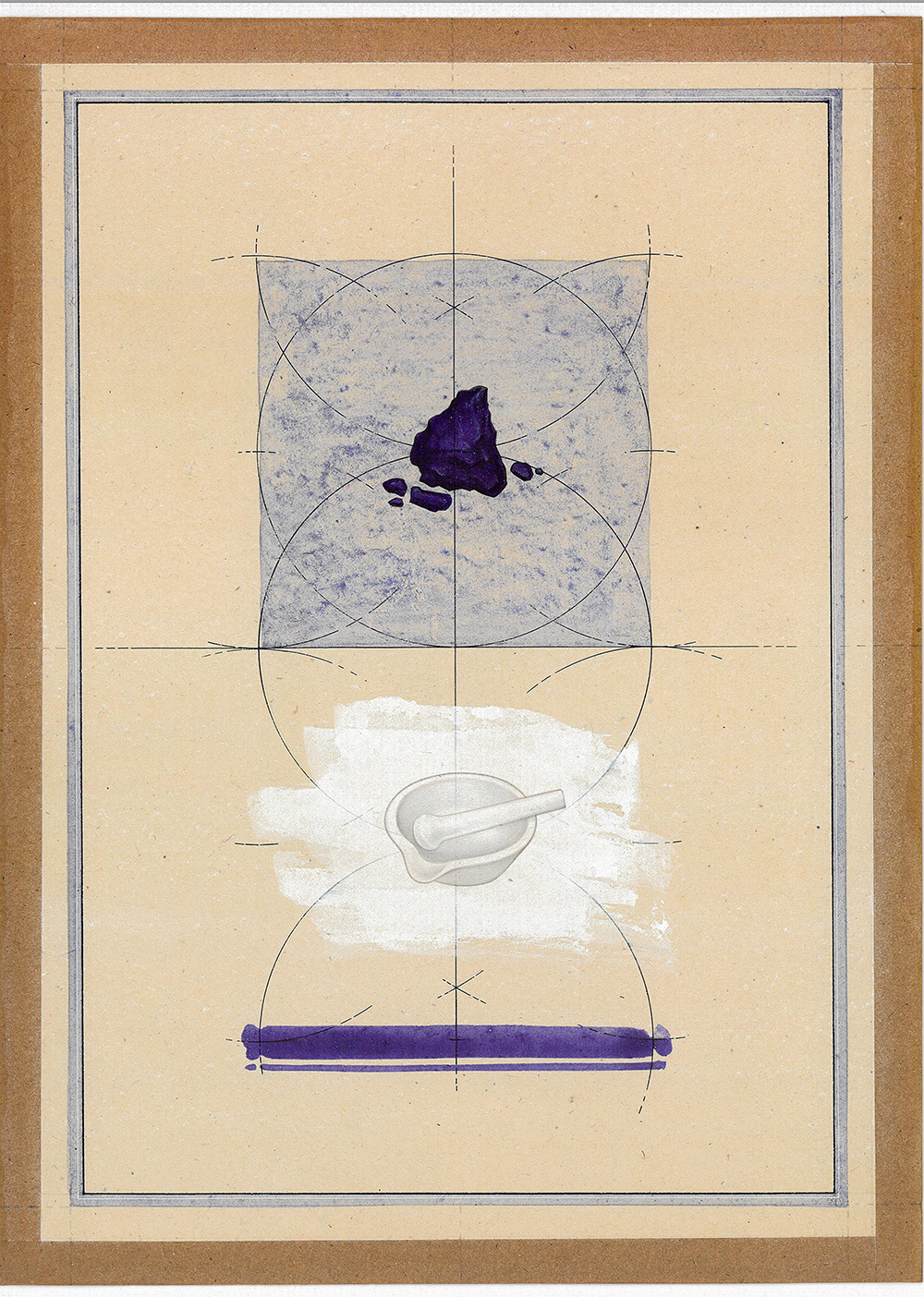
Natural pigments on Handmade Wasli paper
Naveed Sadiq was born in Hyderabad, Sindh Pakistan in 1982. He holds a BFA with distinction from the National College of Arts, Lahore, in 2006 majoring in Indo-Persian Painting. Sadiq has exhibited in group exhibitions nationally and internationally and has participated in and conducted numerous workshops.
His solo shows include Sepia Voyage, Umeed- e-Bahar Rakh, Tamasha Merey Aagey, The Source is One, all at the Koel Art Gallery in Karachi Pakistan and Perpetual Layers at Sanat Gallery and Kajal at O Art Space, Lahore. In 2017, Sadiq completed his MA with Honours from The Prince’s Foundation School of Traditional Arts, London. Sadiq’s thesis research offered thought-provoking insights into the timeline and lineage of miniature art practice. This received immense critical acclaim and is part of the permanent collection at the Islamic Art Museum in Malaysia.
Sadiq was shortlisted as a finalist for the 2019 Sovereign Asian Art Prize. More recently, he painted a beautiful historical timeline starting from 7000 BC to 1947 at the Pakistan Pavilion, Dubai Expo2020, where it generated tremendous interest and critical appreciation. Currently, working on his upcoming solo exhibition and teaching technical drawing at the Indus Valley School of Art and Architecture and Sadiq lives and works in Karachi, Pakistan.
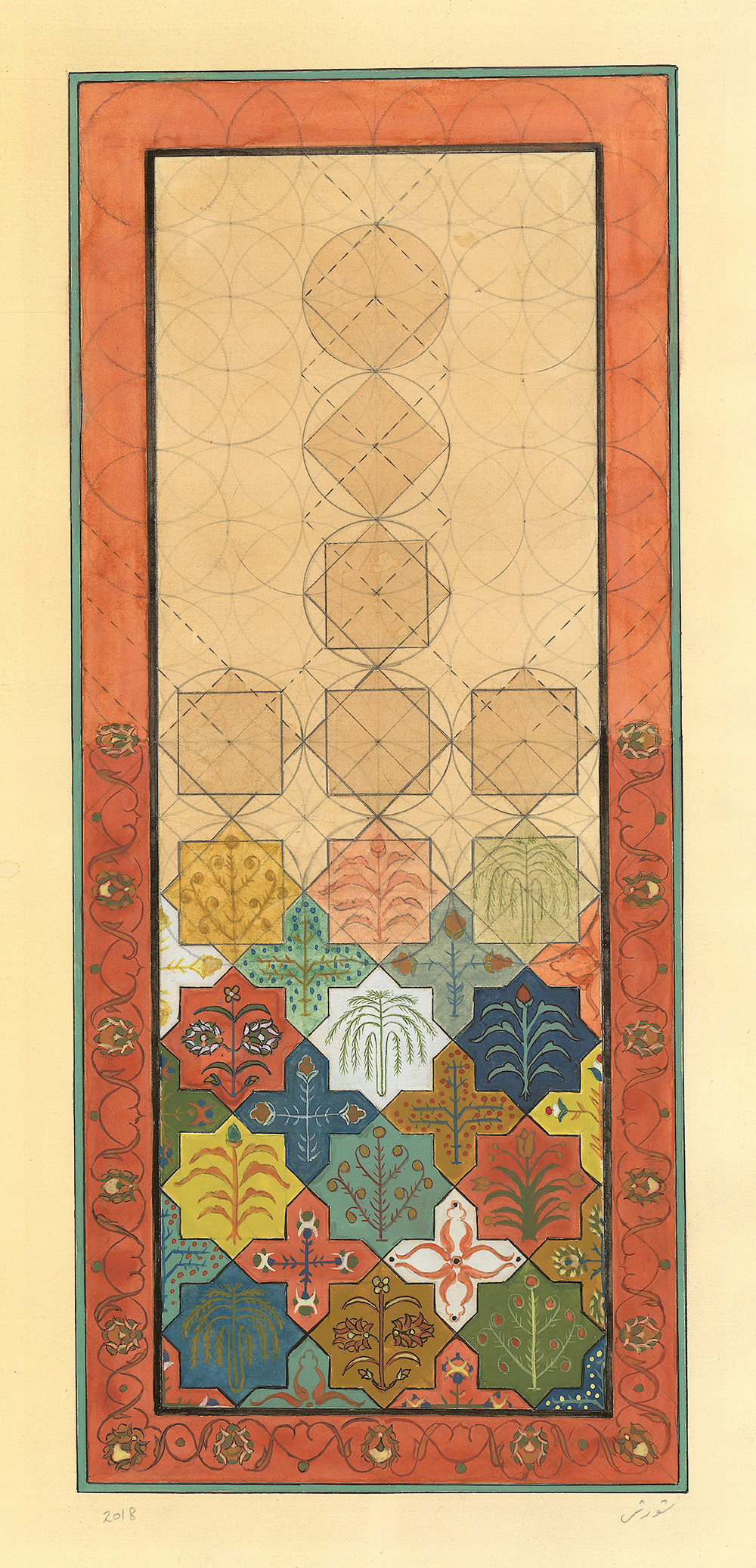
Natural pigment on paper
Shorsh Saleh is a carpet designer, weaver and miniature painter.
His works focus on the subject of migration, border and identity. Saleh’s works employ the traditional techniques of miniature painting in a contemporary context. As an experienced Persian carpet maker many of his paintings are inspired by the symbolic motifs used in traditional carpets, combined with contemporary imagery.
Born in Iraqi Kurdistan, Saleh studied an MA in Traditional Arts at The Prince’s Foundation School of Traditional Arts, London. He has exhibited in Germany, Iraqi Kurdistan, Lebanon, UK and the USA.
His works were part of the ‘Prince & Patron’ exhibition at Buckingham Palace, 2018. His solo exhibitions include ‘Always Colour, Always Rain’, 2000 and ‘Remembering Yezidis’, 2015. Saleh was Artist in Residence at the Migration Museum, London, April 2019. A series of his works were exhibited at the ‘Refugees; Forced to Flee’ exhibition at the Imperial War Museum, London, 2020-2021. Saleh’s works are held in the British Museum, the Bagari Foundation, the Islamic Art Museum, Doha, The Prince’s Foundation and the Royal Collection Trust.
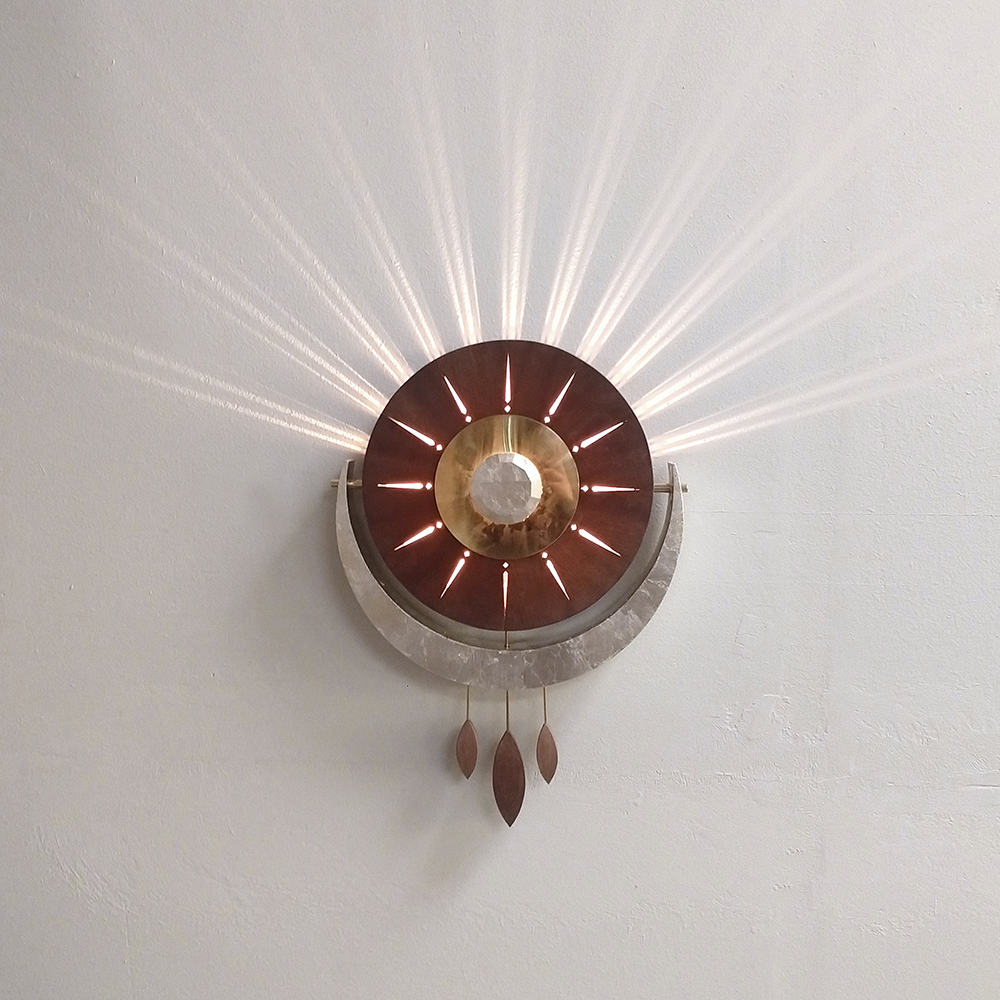
Mahogany, Silver leaf and Brass
Joachim Tantau is based in Hamburg, Germany. Born in 1988 he has been creating furniture and architectural objects since very young age. What started as a hobby at his father’s workbench eventually became a vocation, leading him to opening his own studio in 2013 after receiving a Masters Degree from The Prince’s Foundation School of Traditional Arts, London.
Since then he has created an extensive body of work ranging from furniture and interiors to sculpture and object d’art.
In his work he merges contemporary design aesthetics with the timeless beauty of Sacred Geometry. The design for every unique piece he creates is hand drawn with compass and ruler and carefully executed in his studio using age-old techniques of fine cabinetmaking.
Joachim has also been selected by The Prince’s Foundation School of Traditional Arts, London to teach techniques and principles to aspiring artists and designers all over the world.
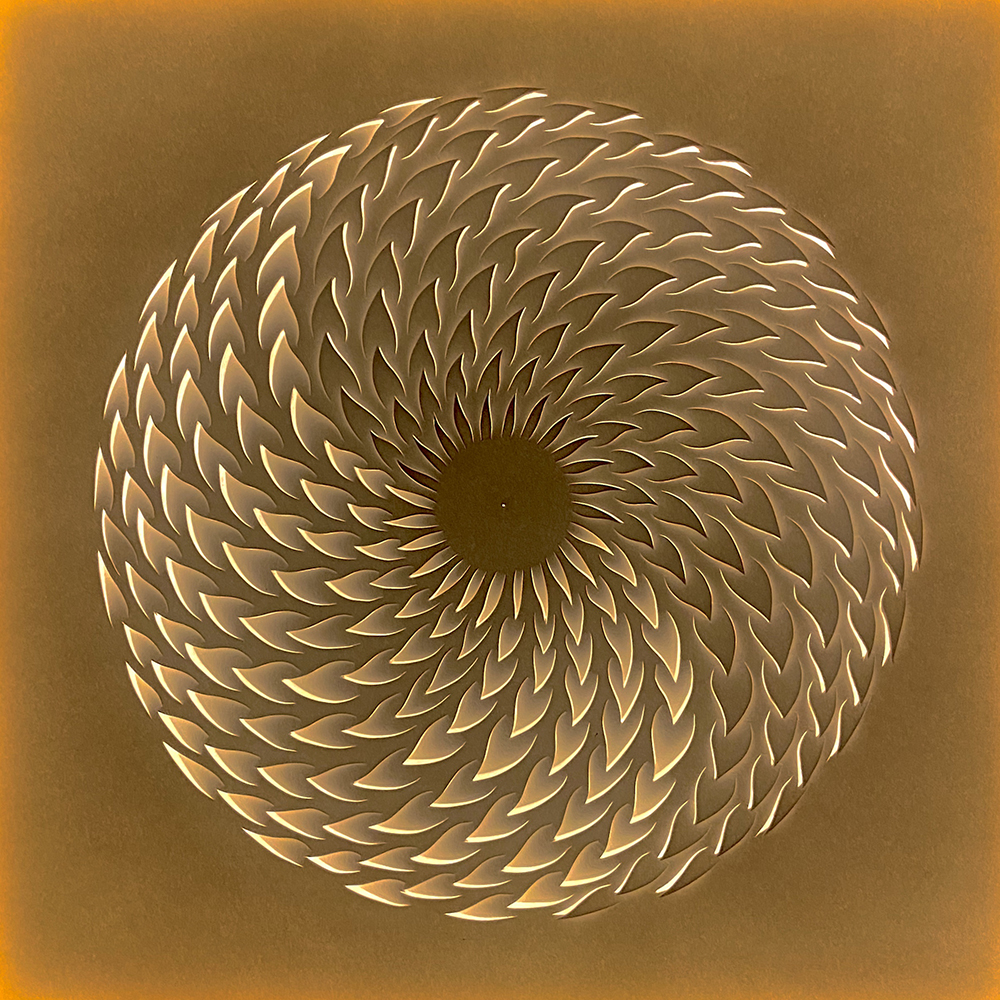
Hand-drawn/designed geometric pattern hand-carved into Fabriano Artistico paper (300gsm), backlit by LED panel
Jennifer Usman (aka Jennifer Jackson) is a Chicagoland-based visual artist whose work feels both timely and timeless. Her ‘contemporary-traditional’ style combines a modern aesthetic with traditional philosophies and methods. Through her studio she creates unique pieces for public sale and exhibition, as well as bespoke, commissioned pieces for private collectors and institutional clients worldwide.
Employing geometric designs and proprietary methods of paper cutting, she lights each piece to create contemplative, serenity-inspiring works of art. Her carved-paper radial designs are regularly featured on CBS Sunday Morning as segment breaks. Besides paper, she also cuts traditional geometric patterns into found leaves.
Jen also teaches, holding local workshops that she has developed around geometry and pattern. Previously, she worked in Chicago’s advertising industry as a prop-maker and package designer. She is an American Muslim convert to Islam, drawing immeasurable artistic inspiration from her faith and spiritual practice.

Unglazed porcelain on wood frame, backlit panel
Born in Lisbon, Portugal with a path through architecture in London and Oxford, Islamic crafts and ceramics at the Prince’s Foundation School of Traditional Arts, art history and archeology of east Asia at SOAS.
Erica’s recent research focus on Japanese art and religions during the periods from the 700s to 1500s, a time of high volume trade along the Silk Road, up to the closing of Japan to the outside world. The connections between cultures are displayed by objects left behind forming the basis of the work, a rich visual imagery research, in ceramic painting with tile installations, and theoretical research writings.
In celebration of the King’s Coronation and 10 years of the PFSTA Ciclitira Prize, together with the Prince’s Foundation School of Traditional Arts (PFSTA) former MA students who graduated during the past decade were invited to submit artworks for inclusion in this group exhibition.
StART’s selection committee and PFSTA MA Professor Khaled Azzam have curated the exhibition which includes 79 artworks by 59 PFSTA graduate artists.

